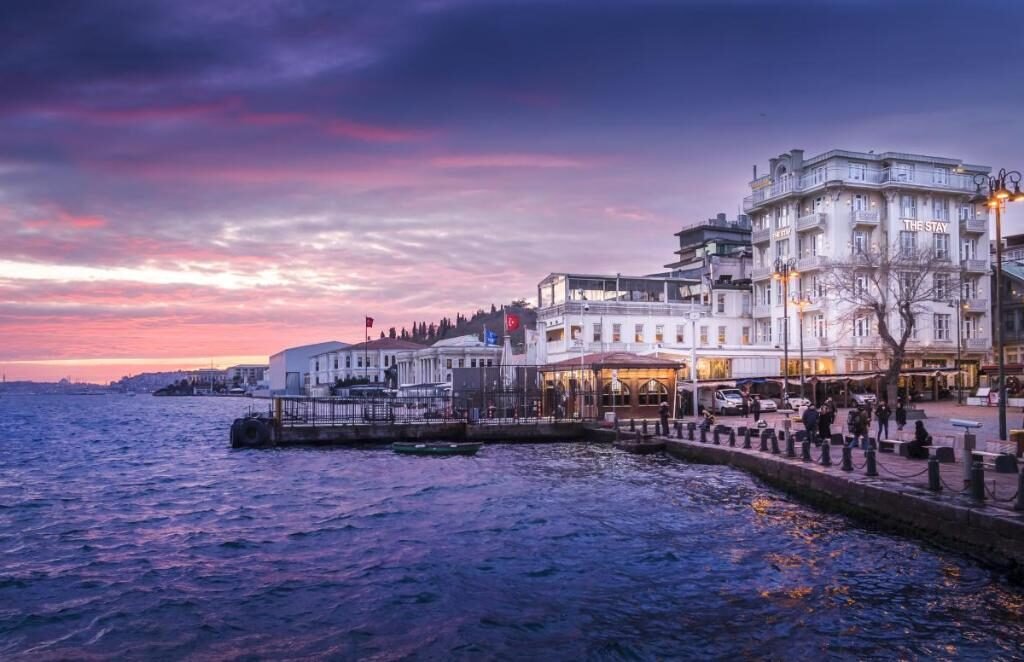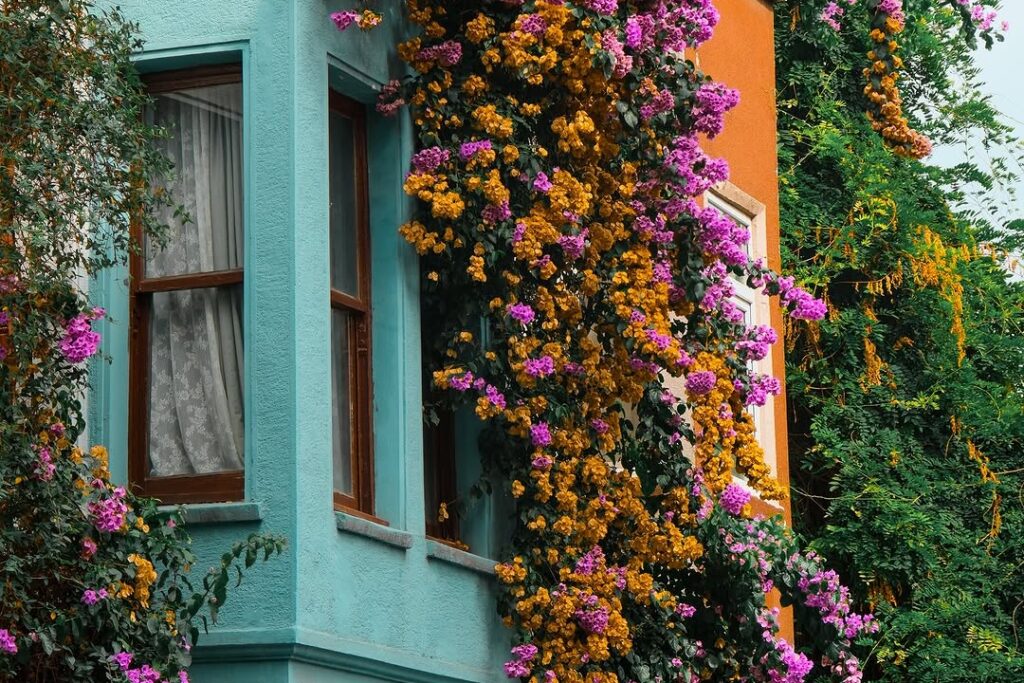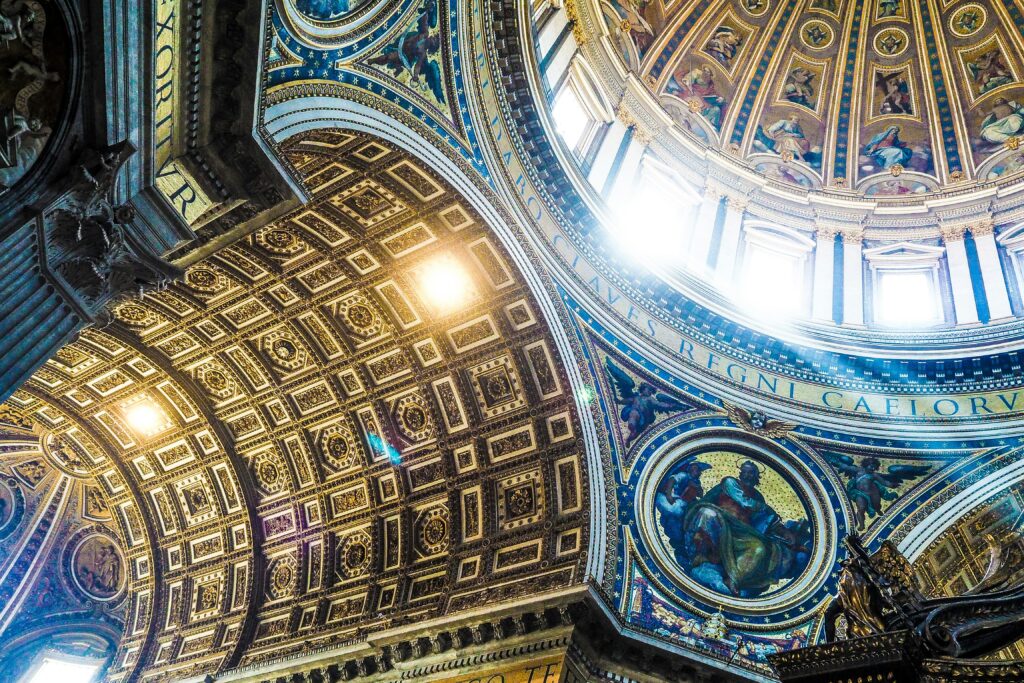Welcome to Istanbul, the city that straddles two continents and is filled with a rich cultural and historical legacy. If you’re wondering what to visit, see, and do during your stay here, look no further!
Whether you have one, two, three, four, five, six, or seven days to spend, we have some suggestions to help you make the most of your time in this vibrant city.
Here you can explore our ultimate Istanbul guide, uncover the gems of the city, its history, and curiosities, and plan your perfect Istanbul itinerary 1 to 7-day options :
Table of Contents
WHAT TO DO IN ISTANBUL: TOP 25 OF THE BEST ACTIVITIES
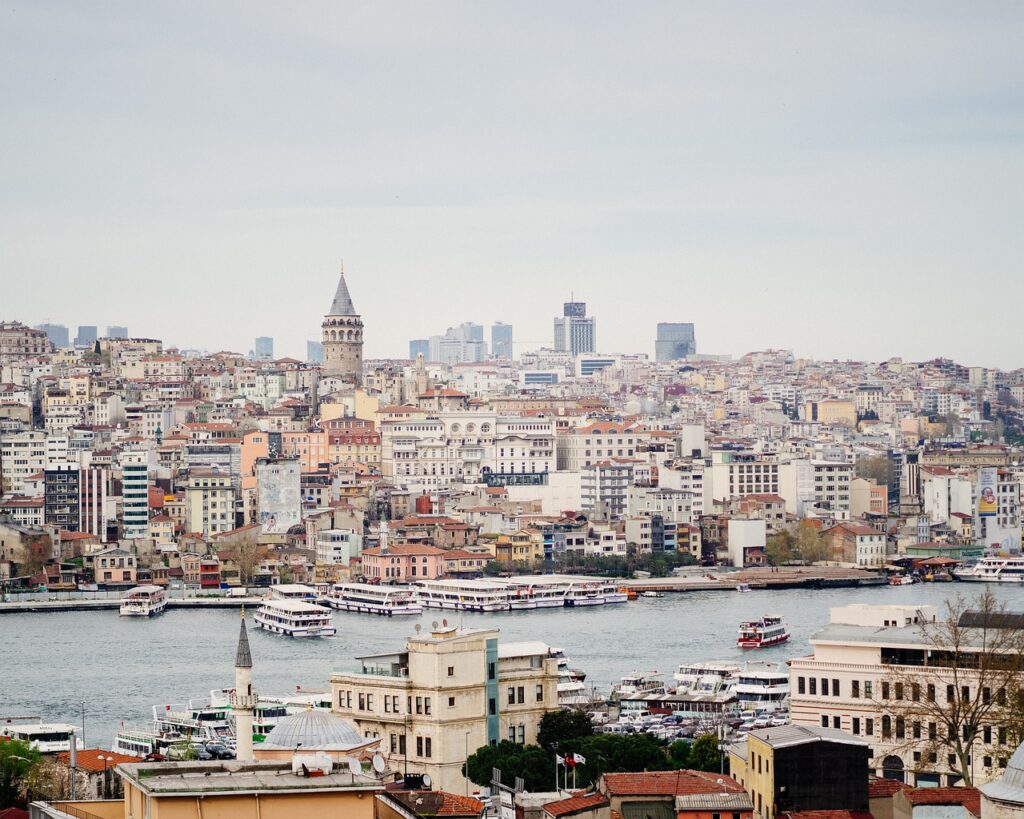
- Visit the Hagia Sophia Mosque, an emblematic monument of Istanbul
- Discover Topkapi Palace and its harem
- Marvel as you enter the Blue Mosque
- Admire the Suleiman Mosque, the work of the great architect Sinan
- Stroll through the historic Sultanahmet district, Istanbul’s oldest district
- Discover the mysterious Basilica Cistern
- Shopping at Istanbul’s Grand Bazaar
- Visit Dolmabahce Palace
- Stroll through Gülhane Park
- Visit the superb New Mosque
- Discover the old European district of Pera
- Stroll along Istiklal Street, pedestrianized and lively at any time
- Climb the Galata Tower and admire the panoramic view of Istanbul
- Take a cruise on the Bosphorus and enjoy the view of the Yali, wooden houses
- Cross the Bosphorus to discover the Asian side of Istanbul, including the districts of Üsküdar and Kadiköy
- Marvel at the Christian mosaics of Kariye Mosque
- Discover the Museum of Mosaics (Roman, those!)
- In season admire tulips in parc Emirǧan
- Climb to the cemetery of Eyüp, visit its mosque, and enjoy the view of the Golden Horn
- Visit the Archaeological Museum
- Discover delicious Turkish food!
- Taste traditional Turkish drinks!
- Enjoy a treatment in a hammam
- Watch a whirling dervish show
- Take historic transport like old trams and funiculars
PRESENTATION OF ISTANBUL
A LITTLE HISTORY…
From Byzantium To Constantinople
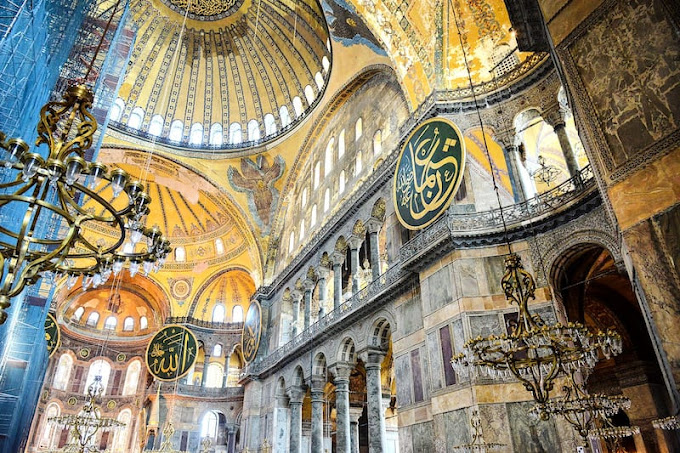
Istanbul is a city with a rich and fascinating history. Originally known as Byzantium, it was a prosperous trading city of the Greeks. After a period of decline, it became the capital of the Eastern Roman Empire when Emperor Constantine The Great made it his new Rome in the 4th century, and it was renamed Constantinople. Although many of its monuments and palaces have been lost over time, the Haga Sophia mosque remains a symbol of the city.
Constantinople: Capital Of The Byzantine Empire
The Byzantine Empire, which was based in Constantinople, became a powerful Christian power and guarantor of the Orthodox tradition. However, it gradually declined due to the advances of the Turkic peoples, who founded the Ottoman Empire. In 1453, after a long siege, Constantinople was taken and became the new capital of the Ottoman Empire, under the name Istanbul.
1453: Istanbul, Capital Of The Ottoman Empire
After it became the capital of the Ottoman Empire, the city was renamed Istanbul and transformed from a Christian city to a Muslim one.
Although Istanbul served as the capital of three empires, it did not retain its status as the capital of Turkey for long. After the dissolution of the Ottoman Empire following the First World War, the capital was swiftly moved to Ankara, a more central and traditional location.
However, Istanbul remains the largest metropolis in the country and serves as the economic hub and capital of tourism, although it was officially renamed from Constantinople to Istanbul in 1930.
… AND GEOGRAPHY

Istanbul’s exceptional geography has always made it a strategic location, whether during the time of Byzantium or modern Istanbul. As the only city in the world straddling two continents, the Bosphorus Strait separates the European and Asian shores of Istanbul, while the Golden Horn is an estuary where two rivers flow. The Golden Horn also serves as a divider between old Istanbul and its former Genoese and “European” district, now known as Beyoğlu. This was once a city apart, where Western embassies were based and Europeans lived.
The old quarter of Sultanahmet sits on a point between the Golden Horn and the Bosphorus to the north, and the Sea of Marmara to the south. It was in this old district that the city of Constantinople first extended, before outgrowing its old ramparts. At the very end of the point is the location of the sultan’s home, the Topkapi Palace, which is situated behind the iconic Hagia Sophia.
On the Asian side of Istanbul lies the district of Kadiköy, which was once an independent Greek city before becoming a part of Byzantium.
HOW MANY DAYS TO VISIT ISTANBUL?
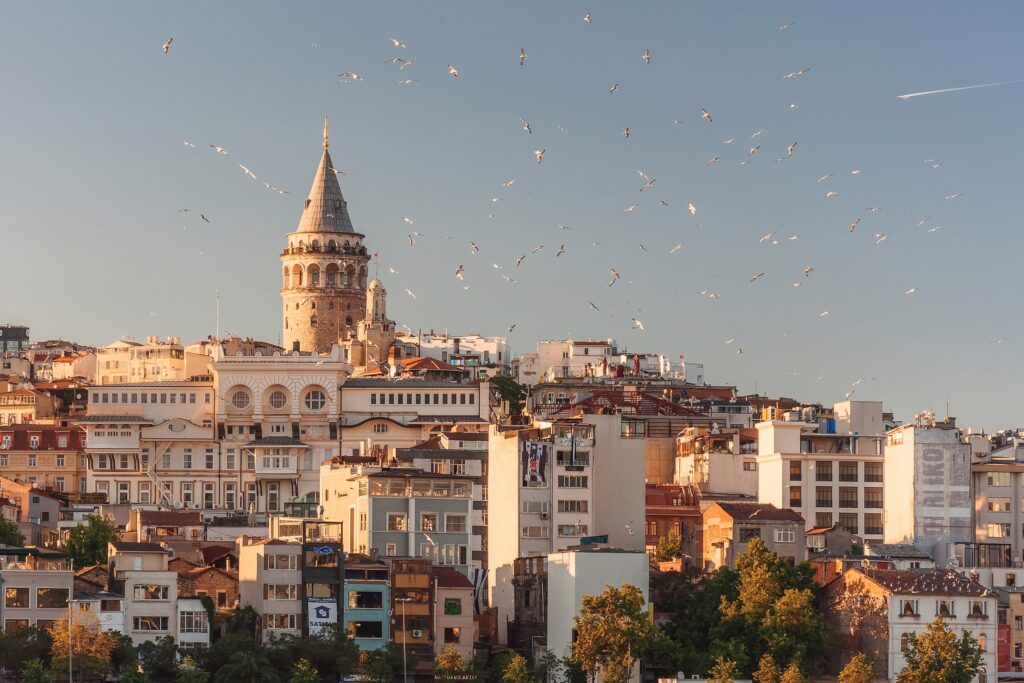
Istanbul is the largest city in Turkey and one of the largest European cities (for its side on the old continent), with a very rich history.
We cannot explore Istanbul in just a day, unlike some smaller cities.
- It will take a MINIMUM of 3 or 4 days to discover the essentials of Istanbul
- Depending on your interests, you can even spend a week there without any problem, or even 10 days, or more!
WHERE TO STAY TO VISIT ISTANBUL? SELECTION OF THE BEST HOTELS
Istanbul is indeed a large city, but many of the main points of interest are concentrated in the Sultanahmet district and the European side in general.
Staying in or close to the Sultanahmet district is convenient for sightseeing in Istanbul. However, it is important to note that this area is heavily touristic and may not be the most “authentic” experience of the city.
BEST HOTELS IN ISTANBUL’S SULTANAHMET DISTRICT
Here are some best hotel addresses. Hotels presented from the cheapest to the most expensive :
Budget Hotels In Sultanahmet Area

- Agora Hostel: a well-placed and well-rated hostel with a beautiful terrace with a view. Beds in dormitories or private rooms. Suitable for small budgets and solo travelers.
- Villa Sweet Hotel: hotel well located near all the tourist attractions of Istanbul. Rooms with private bathrooms. Room service and breakfast buffet.
- Mr. Bird Hotel : again good value for money, a convenient location for visiting Istanbul, and tastefully decorated rooms with a mini-bar.
- Hotel Orkide : small family establishment in a quiet but central area of Istanbul, unbeatable prices (from 40€/night for comfortable rooms with private bathrooms. Very good ratings.
Mid To High-Budget Hotels In the Sultanahmet Area
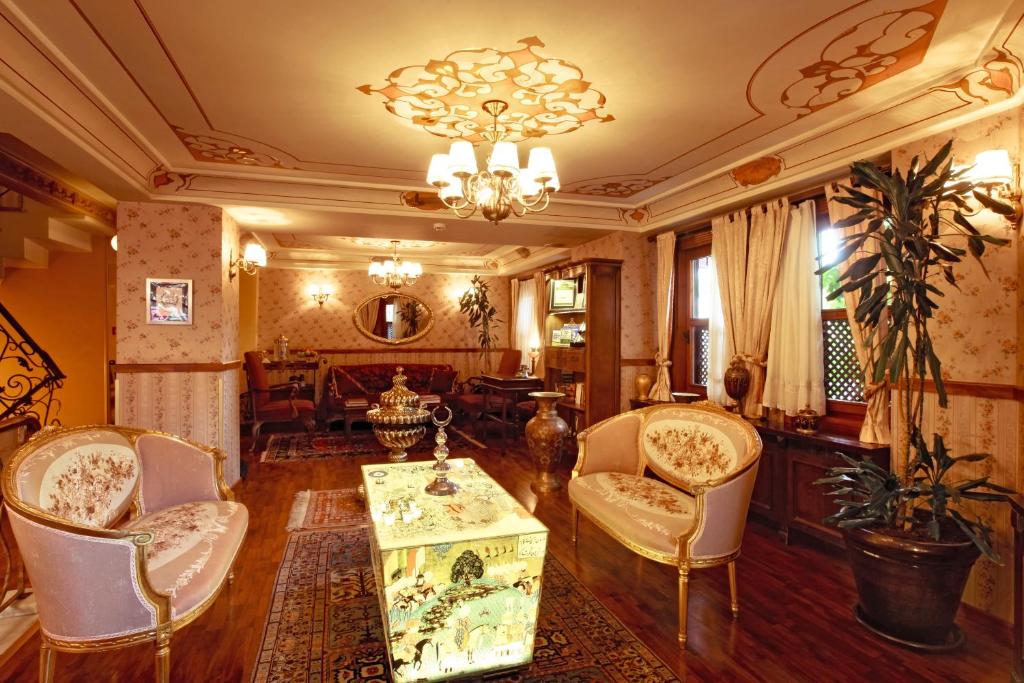
- Best Point Hotel Old City : exceptional location near Hagia Sophia. Hotel with a restaurant on the terrace with a superb view! Hot tub in each room, and some have a Turkish bath, gardens … Family suite possible for family trips. For the services and the location, the price is interesting (from 85€ depending on the dates)
- Garden House Hotel – Special Class : more good reviews for this small hotel with nicely decorated rooms, below Sainte-Sophie. The establishment has a restaurant with a garden .
- Dersaadet Hotel Istanbul : a stone’s throw from Sultan Ahmet Square, a small hotel in a beautiful traditional house, pretty rooms, and breakfast served on a terrace with a sea view!
HOTELS NEAR GRAND BAZAAR AND ISTANBUL UNIVERSITY

You can wander off a bit and go to the Grand Bazaar and Istanbul University, be sure to stay near the tram- it is practical!
- The Ottoman Boutique : very good prices for comfortable rooms with their own bathrooms. Common lounge and garden.
- Burckin Suleymaniye : right next to the Suleiman Mosque, this establishment offers rooms with private bathrooms, room service, a lounge, and above all a restaurant with a superb view of the mosque.
- HHK Hotel : unbeatable prices for this small hotel in a traditional Istanbul residence with a roof terrace offering a superb view of the Golden Horn, as well as a swimming pool and Turkish bath to discover the Ottoman tradition.
HOTELS IN ISTANBUL ACROSS THE GOLDEN HORN

You can also stay on the other side of the Golden Horn, in the Beyoǧlu district, near Istiklal Street, or in the Karköy district. Convenient location for visiting Istanbul.
This is a very lively district, well connected by metro and tram to the city’s tourist attractions.
- Hotel Momento Golden Horn : hotel with a garden, and above all rooms with beautiful views of the Golden Horn, as the name suggests… Costs around a hundred euros per night.
- Ada Karakoy Hotel: close to the tram stop to reach Sultanahmet and the Galata Bridge, beautiful modern hotel, rooms with kitchenette, restaurant with terrace and beautiful view. Ideal location for visiting Istanbul . From 83€/night.
- The Wings Hotel Istanbul: similar to the previous one, but even more luxurious. Large classy rooms, some with sea views.
- WATERFALL : several large apartments with living rooms, bedrooms, equipped kitchens, and beautiful view.
- Galata VAV Suites : studios that can accommodate up to 3 people, including a terrace with a view of the Istanbul. From 75€/night
- Heristage Istanbul : large apartments that can also accommodate 3 people, close to Istiklal Street and transport to visit Istanbul. A quiet place, with a view of the garden. From 70€ for two people.
WHICH NEIGHBORHOODS TO VISIT IN ISTANBUL? WHERE TO WALK IN ISTANBUL?

Istanbul is a huge city, there are several neighborhoods worth exploring, each with its unique character and attractions.
Here is a list of some of the most interesting neighborhoods:
- Sultanahmet: the old historic district of Istanbul with Hagia Sophia, Topkapi, the Blue Mosque… It has no official boundaries and it is not an administrative district.
- Karaköy : opposite Sultanahmet, on the banks of the Golden Horn, this is a well-preserved ancient village
- The old district of Pera, or Beyoǧlu , is on a hill overlooking the Golden Horn, on the other side of Sultanahmet. There is the Galata Tower, Istiklal Street, and several museums. This was the residence district of European foreigners in Istanbul.
- Beşiktas : around Dolmabahçe Palace, partly along the Bosphorus and on a hill. There is the palace here, Yildiz park, old houses, a chic district, and the business district of Istanbul, the Levent.
- Nişantaşi : beyond Taksim, quite an upscale and lively district, known for its bars, restaurants, chic boutiques, and large shopping centers
- Ortaköy : small old quarter on the Bosphorus, with its famous mosque and postcard image of Istanbul
- Arnavutköy : ancient village on the Bosphorus, famous for its wooden yali
- Emirǧan : even further on the Bosphorus, there is Istanbul’s famous tulip park, a museum, and beautiful houses.
- Fener and Balat : north of the historic center, along the Golden Horn, these are the old Greek and Jewish quarters of Istanbul, once rich, now popular, with old and colorful houses
- Kadiköy : on the Asian side of Istanbul, the closest to Sultanahmet, again a typical old village
- Üsküdar : on the Asian side, with some sights to see, including mosques
- Eyüp : north of the old ramparts, there is the mosque and the cemetery of the same name
HOW TO GET AROUND ISTANBUL?
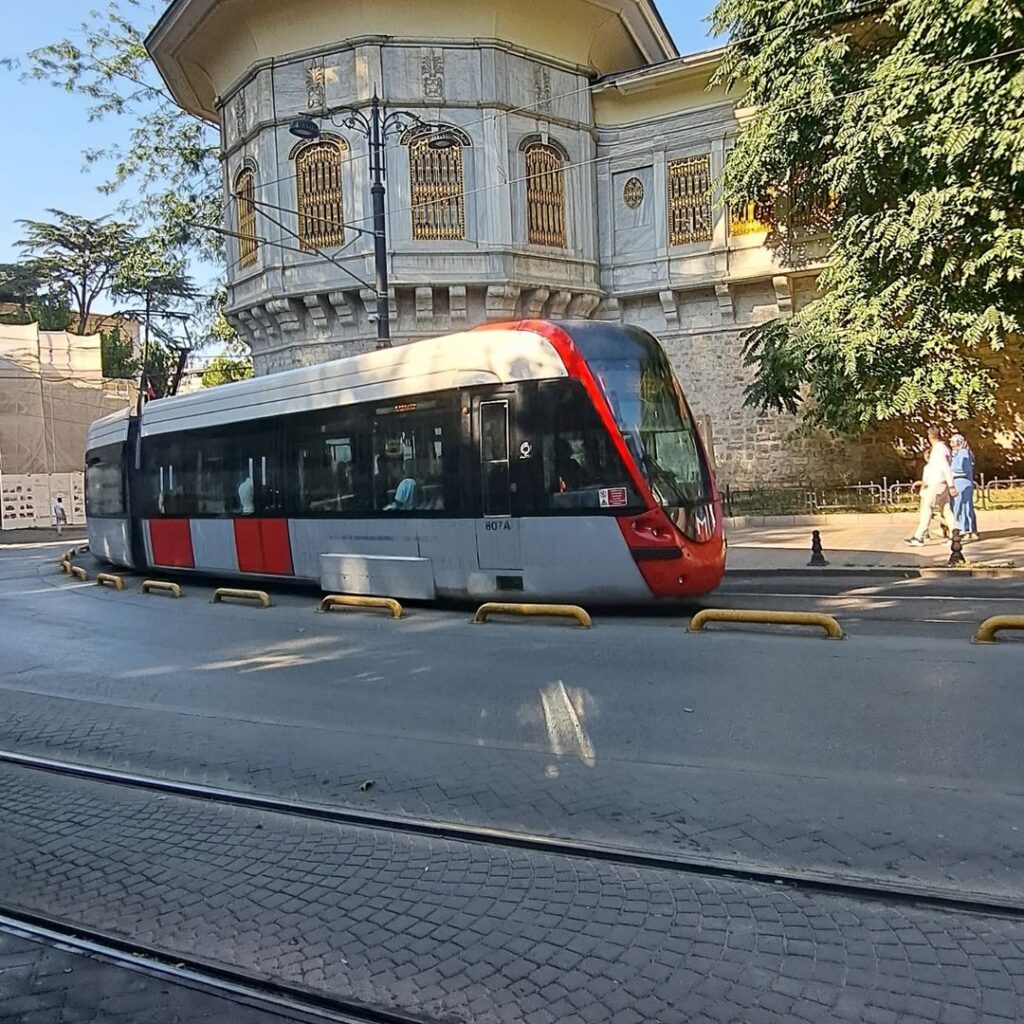
Istanbul boasts an extensive transportation network consisting of metros, trams, buses, and ferries. While the city is massive, the metro network is not as well-developed as in other major European cities, though it is slowly expanding and useful for traveling between different tourist destinations. Line 1 of the tram provides service to the entire Sultanahmet district.
Once in a specific district, exploring Istanbul on foot is a great way to see the sights. Consider purchasing an Istanbulkart to pay less per trip.
HOW TO GET TO THE CENTER OF ISTANBUL FROM THE AIRPORTS
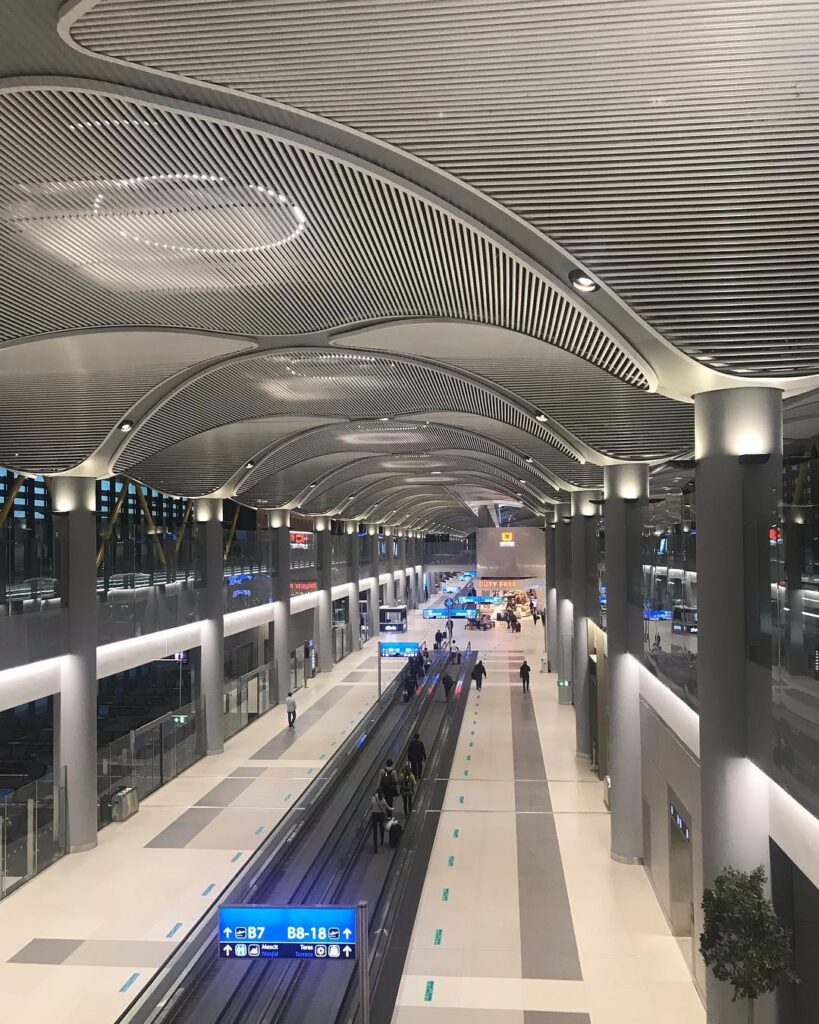
Istanbul is served by two airports, one on each continent.
HOW TO GET TO THE CENTER FROM ISTANBUL AIRPORT (IST)
Istanbul New Airport (IST) opened in 2020 to replace Atatürk Airport. If the Atatürk Airport was ideally located on the metro, the new one is in the middle of nowhere, and about 50 km from the center! While waiting for the opening of line 13 of the metro, it will therefore be necessary to take a bus or a taxi. There are two kinds of bus lines:
- Buses of the IETT metropolitan network (several lines)
- Buses from the more comfortable private company HAVAIST (several lines too)
To reach Taksim Square from the new Istanbul airport, the journey time is approximately 1h30. This will of course depend on the traffic. Istanbul airport is one of the largest in the world, really impressive…
All information is on the official website of Istanbul Airport.
HOW TO GET TO CENTRAL ISTANBUL FROM SABIHA GÖKÇEN AIRPORT
Sabiha Gökçen Airport is located on the Asian side of Istanbul, about 60 km from the center. You can take: A municipal bus line: most stop at Kadiköy on the Asian side, but a line allows you to reach the “Levent” metro, two stations from Taksim. The Havabus shuttle: about 1 hour (minimum) to Taksim Square
Click here for details on Havabus, including timetables
More details on the official website of Sabiha Göckçen Airport
THE MUST-SEE PLACES IN ISTANBUL
It would be quite impossible to list all the places to visit in Istanbul, there are so many, I, therefore, offer you a summary of the “must-see” places not to be missed during a stay in Istanbul, followed by a program of visits. I advise you also to get this tourist pass if you want to get the most out of your visit, really convenient!
1. HAGIA SOPHIA
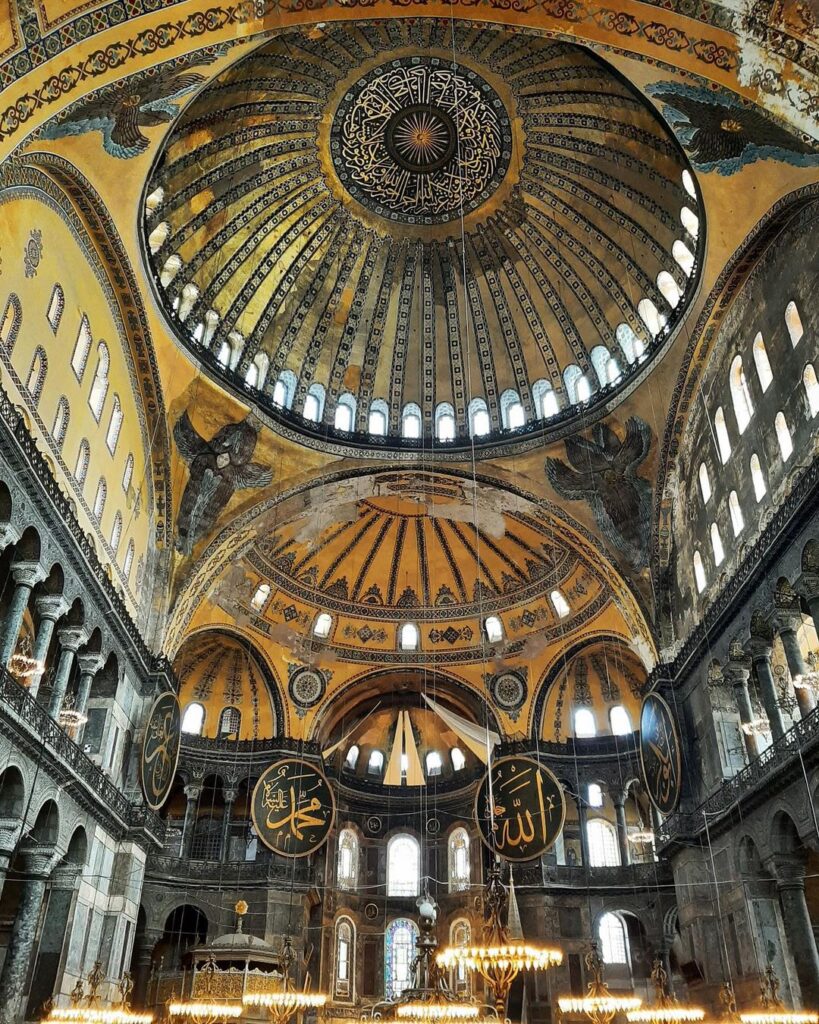
Hagia Sophia was long the largest church in the Christian world, and its architecture subsequently inspired many religious buildings. Its grandiose size and impressive dome make it the largest building in Istanbul. After the Ottoman conquest, it was converted into a mosque and served as an example for future Ottoman mosques. Today, it is a museum that attracts millions of visitors each year and is recognized as a UNESCO World Heritage site. Hagia Sophia is a stunning architectural marvel that features old mosaics, an enormous dome, and elements added during the Ottoman period, such as the mihrab and the library. Visitors to the museum can explore the interior and marvel at the blend of Byzantine and Islamic architectural styles. Within the walls of Hagia Sophia, you will also discover the magnificent tombs of sultans and princes, these tombs are beautifully decorated with intricate tile work and calligraphy, and offer a glimpse into the history of the Ottoman Empire.
BOOK HAGIA SOPHIA TOUR AND SKIP THE LINE
2. THE BLUE MOSQUE
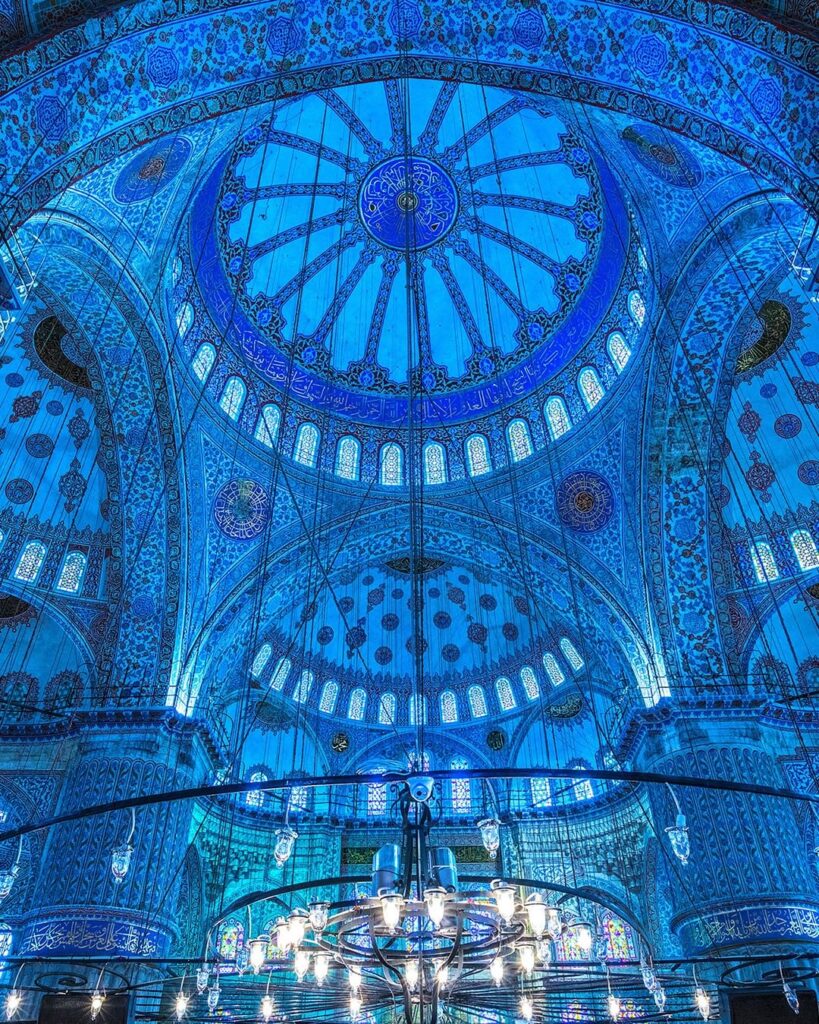
The Blue Mosque, also known as the Mosque of Sultan Ahmet, is one of the most beautiful mosques in Istanbul. Built in the 17th century by students of the great architect Sinan, its architecture is inspired by that of Hagia Sophia, as are many mosques in Istanbul. However, it is the only mosque in the city to have six minarets, which caused a bit of controversy at the time of its construction. When the sultan learned that no mosque could have more minarets than that of Mecca, he paid for the addition of a minaret to the Grand Mosque in Mecca, and the problem was solved! The Blue Mosque owes its nickname to the thousands of pieces of blue ceramic that adorn its interior, creating a mesmerizing effect. Visitors can admire the intricate details and different cupolas of the mosque, which are simply magnificent. As with other mosques in Istanbul, visitors cannot walk around freely, as the center is mainly dedicated to prayer. However, it is a must-visit place in Istanbul, and a great opportunity to learn more about the city’s history and culture.
3. TOPKAPI PALACE AND ITS HAREM
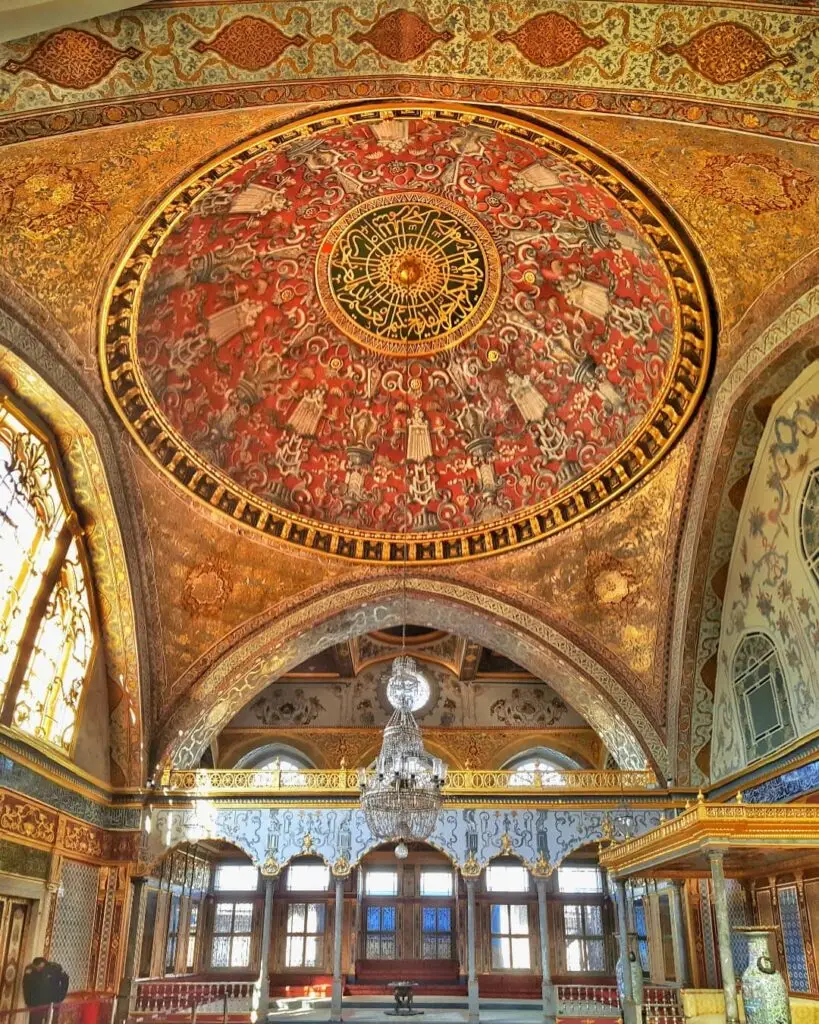
Another symbolic monument to visit in Istanbul, Topkapi Palace is actually a large palace complex. It housed the imperial family and the Ottoman government for centuries. Topkapi Palace is divided into three parts:
- The Ottoman Museum, which occupies different pavilions of the “public” palace
- The Harem, or private part, place of residence of the female members of the Sultan’s family
- The Gardens: With its beautiful ceramic decor and magnificent architecture, it feels like a palace from 1001 nights!
BOOK TOPKAPI PALACE HAREM TOUR
4. SULEIMAN MOSQUE
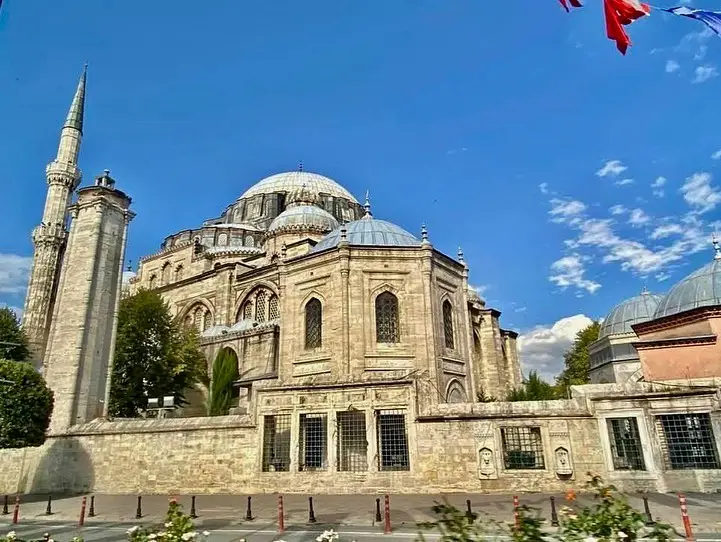
Another must-see monument in Istanbul is the Suleymaniye Mosque, also known as the Suleiman Mosque. It was built between 1550 and 1557, towards the end of the rule of Suleiman the Magnificent, and is the work of the great architect Sinan, who was very important in the history of architecture in Istanbul. The style of the Suleymaniye Mosque evokes that of Hagia Sophia, which was a point of reference for many architects in Istanbul. The mosque is distinguished by its four minarets, which symbolize that Suleiman was the fourth sultan to live in Istanbul. The sultan wanted to mark the end of his reign with the construction of a major building in Istanbul, and the Suleymaniye Mosque certainly achieved that goal. The Süleymaniye Mosque dominates the Golden Horn from the top of its hill and can be seen from different points of the city. Besides the mosque, the complex houses in its courtyard various mausoleums, including that of Sultan Suleiman and his wife Roxelana, called Hürrem in Turkish, as well as that of Mimar Sinan.
5. THE BASILICA CISTERN
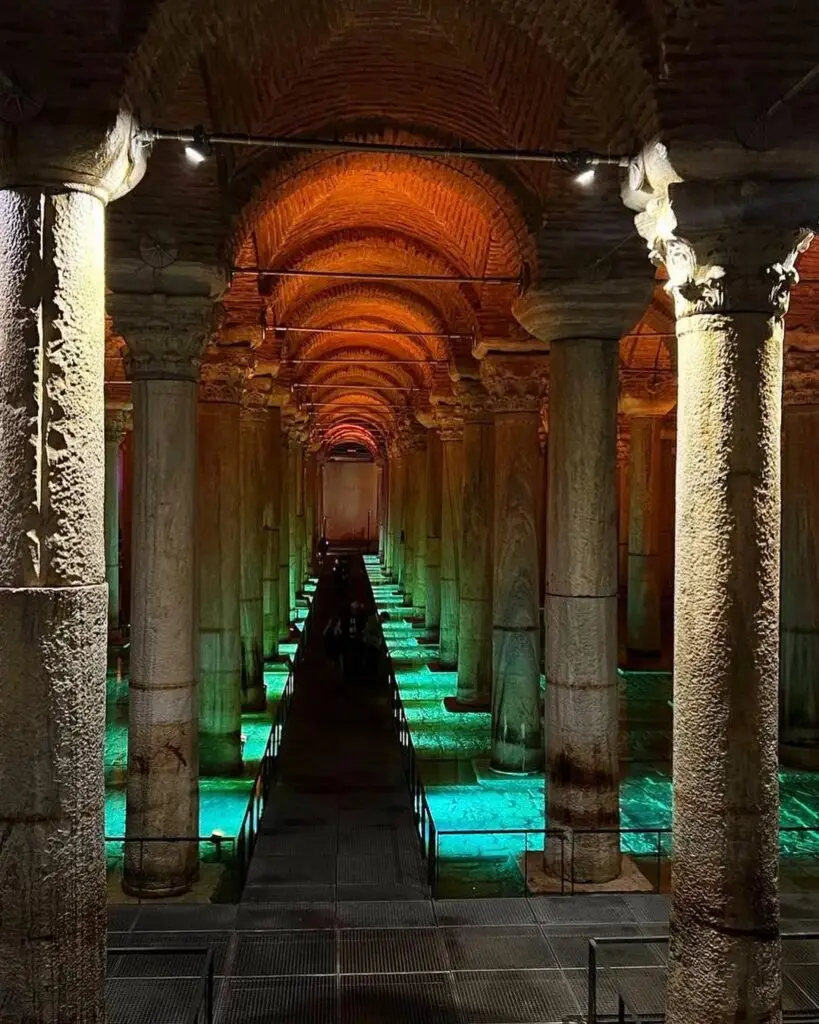
A real curiosity in Istanbul that you should not miss is the Basilica Cistern. As its name suggests, the cistern was originally a water storage created under the Byzantine Empire. However, today people come here for the monumental architecture and the somewhat mysterious, even mystical atmosphere that emanates from it. Inside, you can admire 336 columns, 9 meters high, with their feet in the water, and lit by a reddish light that offers an almost otherworldly spectacle. You may even see a few fish swimming in the water. Follow the somewhat signposted route that leads you to the “Column of Tears,” and then to the heads of Medusa supporting two columns. It’s unclear where these heads come from, but they add to the intrigue and mystery of the place. Concerts are sometimes held in the Basilica Cistern, thanks to its exceptional acoustics.
BOOK BASILICA CISTERN TOUR AND SKIP THE LINE
6. THE HISTORIC DISTRICT OF SULTANAHMET
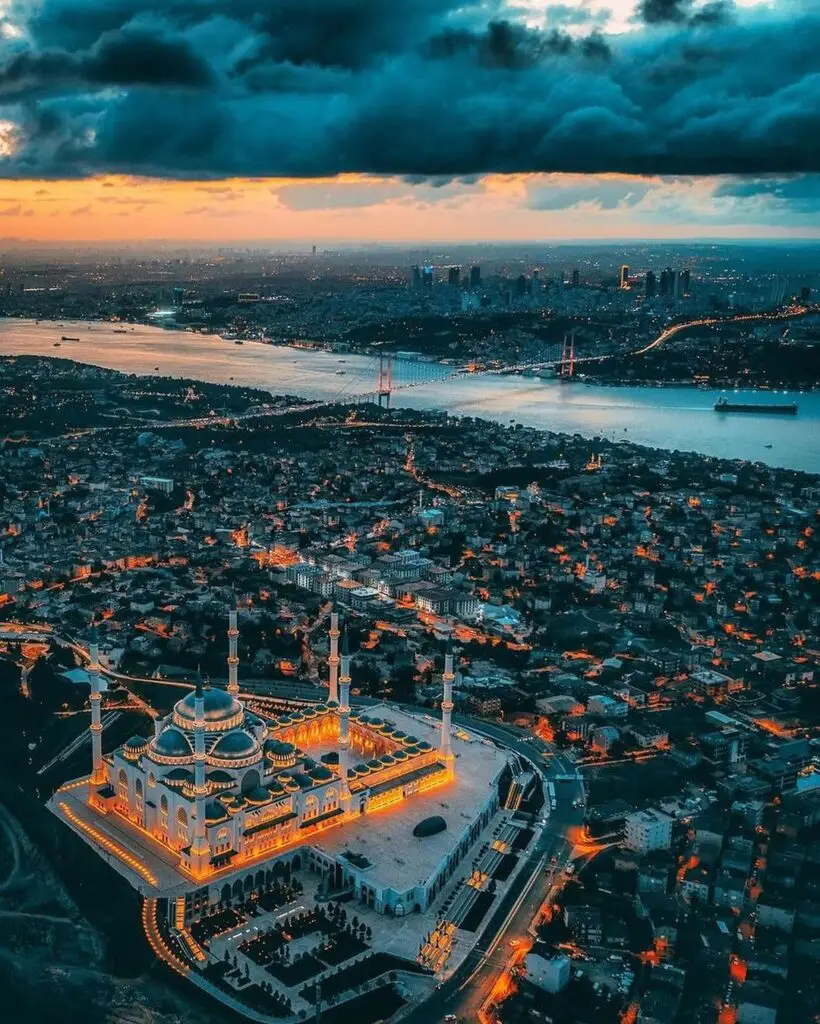
Sultanahmet is a historic district in Istanbul, Turkey, and home to many of the city’s most famous landmarks, such as the Hagia Sophia, Blue Mosque, and Topkapi Palace. The district also features charming cobblestone streets, traditional Ottoman-style architecture, and lively bazaars selling everything from spices to textiles. Visitors can immerse themselves in Istanbul’s rich history by exploring the numerous museums, mosques, and ancient ruins in the area, while also indulging in delicious Turkish cuisine at the many restaurants and cafes.
7. HIPPODROME SQUARE
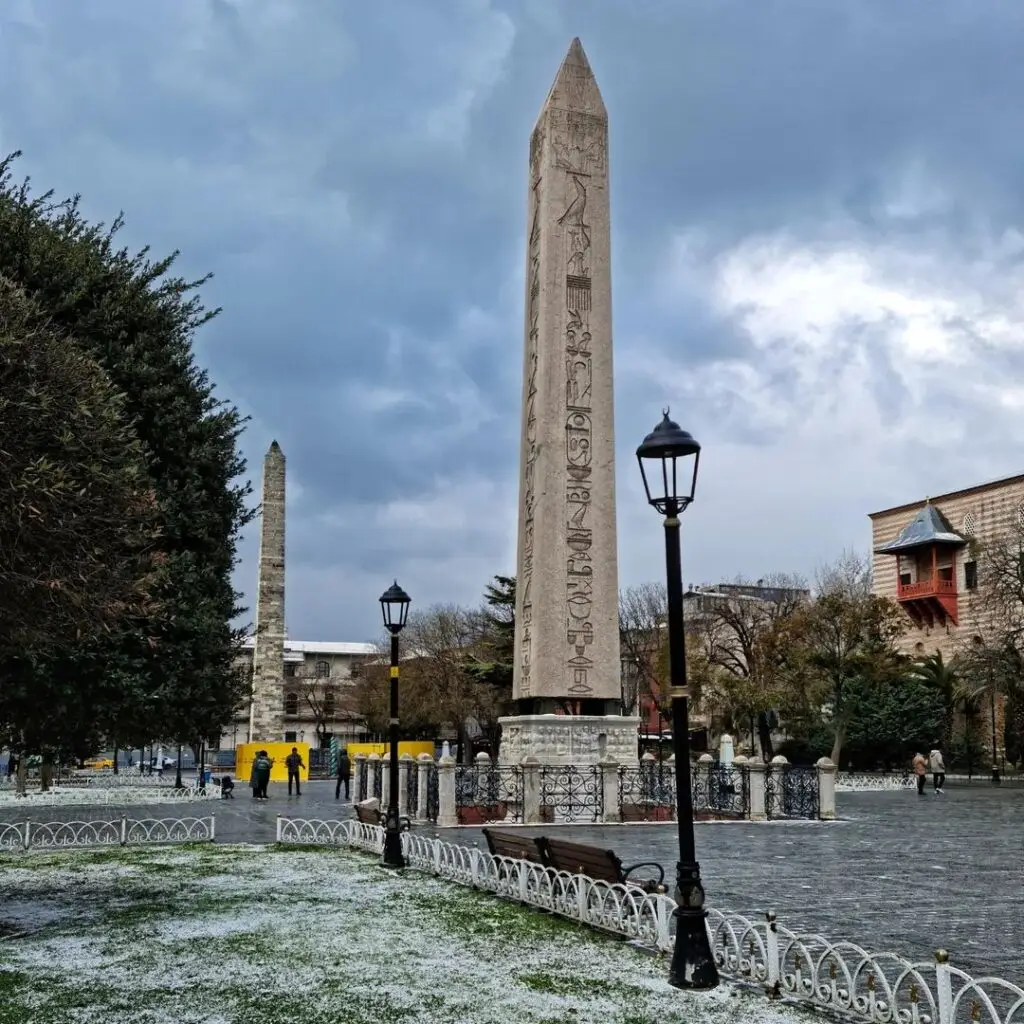
Sultanahmet Square is a vibrant public square located in the historic Sultanahmet district of Istanbul, Turkey. This bustling area was once the site of the great Hippodrome of Constantinople, inspired by the Circus Maximus of Rome. While only a small portion of the Hippodrome remains visible today, visitors can still explore the square and discover its rich history. In ancient times, the Hippodrome was a central gathering place for the people of Constantinople and was often used for public events and games, including thrilling chariot races. Over the centuries, the Hippodrome underwent many changes and renovations, and it finally took on its final dimensions under the rule of Emperor Constantine. Today, Hippodrome Square is a bustling hub of activity in Istanbul, filled with lively street vendors, cafes, and shops. Visitors can take in the sights and sounds of the city while admiring the remaining monuments of the Hippodrome, including the Obelisk of Theodosius, the Serpentine Column, and the German Fountain. You can still find ancient columns there, and you can also visit the Museum of Turkish and Islamic Arts , housed in the former palace of Ibrahim Pasha , Sultan Suleiman the Magnificent’s right-hand man.
8. THE GRAND BAZAAR AND THE EGYPTIAN BAZAAR
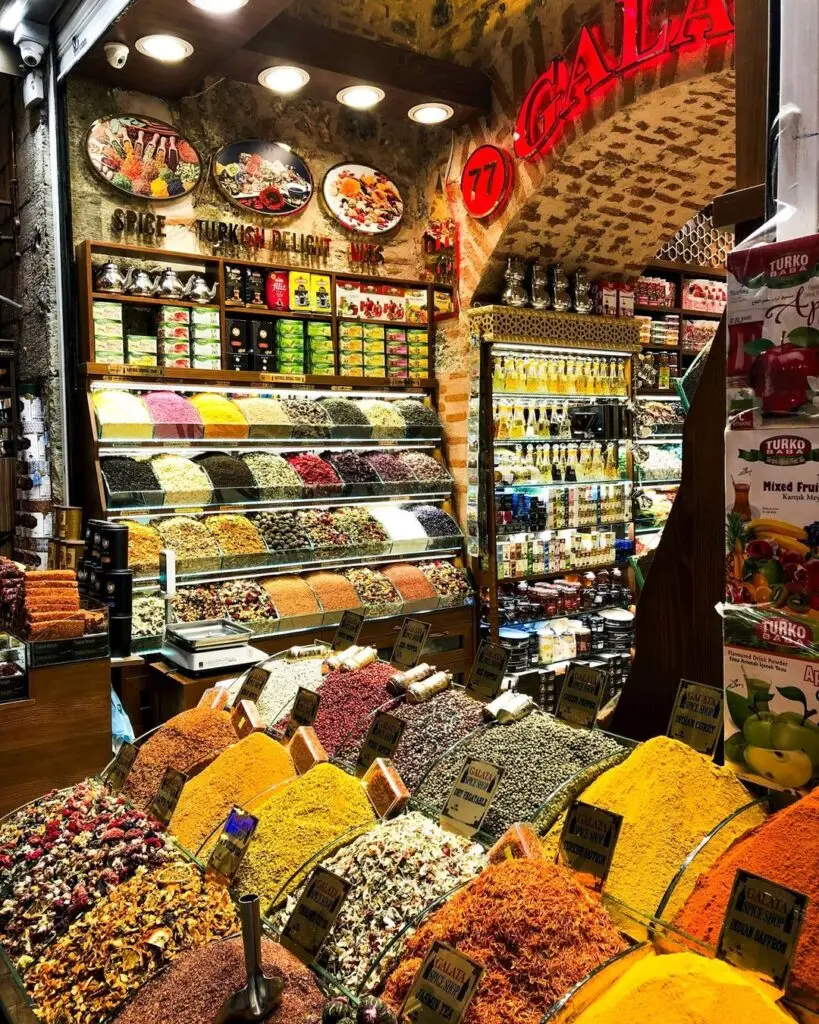
Bazaars are an integral part of Istanbul’s culture and history, similar to the souks found in Arab countries. The Grand Bazaar, the largest covered market in the world with its 45,000 m2, is undoubtedly a must-see place in Istanbul. If you’re looking for a more authentic bazaar experience, I recommend visiting the Spice Bazaar (also known as the Egyptian Bazaar). Though smaller and less imposing than the Grand Bazaar, it has a unique and charming atmosphere with its traditional stalls of spices, fruits, vegetables, and sweets. Even though it’s a tourist destination, many locals also frequent the Spice Bazaar. Worth visiting is Mehmet Effendi’s coffee shop, a popular spot among Istanbul’s residents.
9. ISTANBUL’S NEW MOSQUE-YENI CAMI
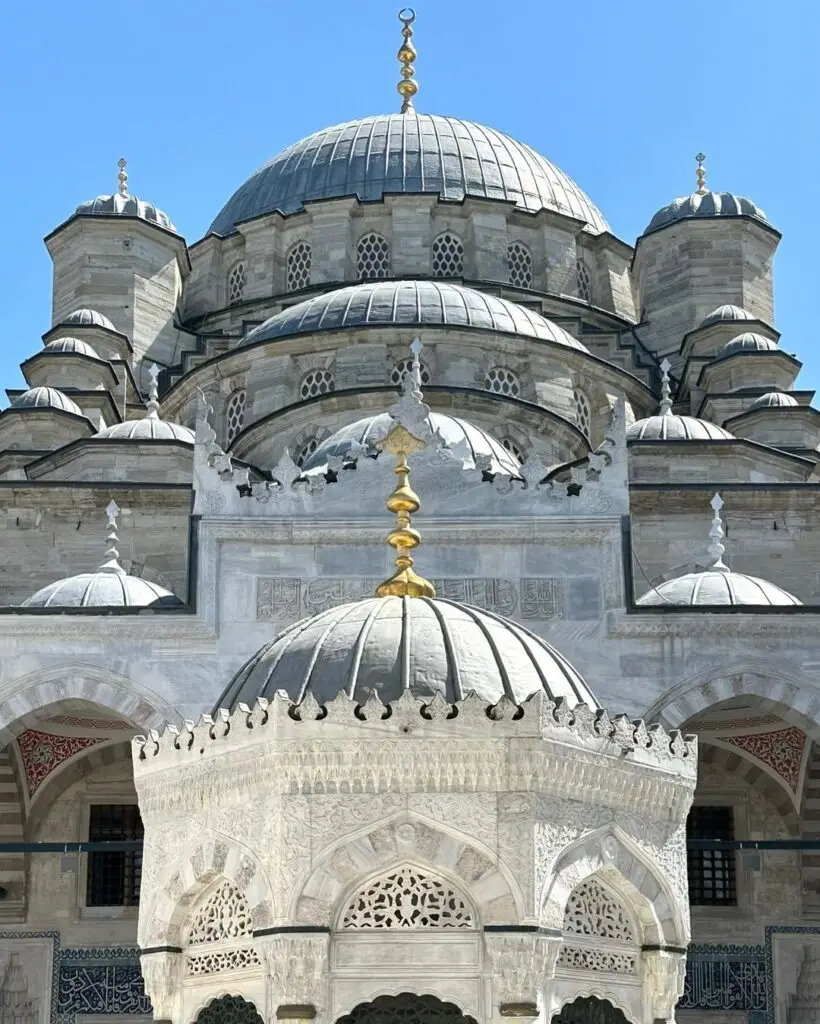
Istanbul is home to numerous mosques, and among them, the stunning New Mosque should not be missed. Located in Eminönü Square on the Golden Horn, the mosque is easily accessible from the Beyoǧlu district via the modern Galata Bridge. The square is a bustling hub in Istanbul, with boats arriving and departing for Üskudar and Kadikoy on the other side of the Bosphorus. The New Mosque is an impressive structure, both inside and out, and is adorned with exquisite Iznik mosaics, similar to those found in the Blue Mosque. Despite its name, the New Mosque is quite old, dating back to the 17th century. It was commissioned by Sultana Safiye, one of the most powerful “queen mothers” in Ottoman history, who sought to embellish Istanbul with stunning monuments. A visit to this mosque is a must during your stay in Istanbul, and it will leave you in awe of the city’s rich history and architecture.
10. THE OLD DISTRICT OF PERA- BEYOǦLU
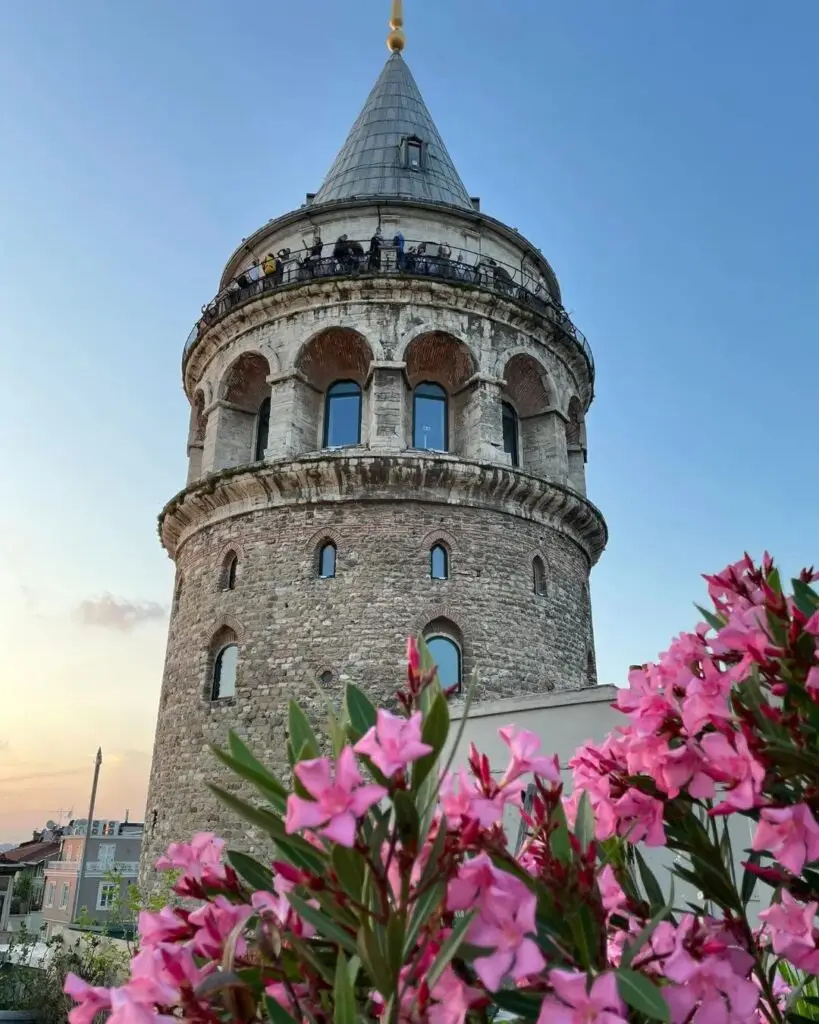
Let’s continue exploring Istanbul by crossing to the other side of the Golden Horn. One of the ways to do so is by walking across the Galata Bridge. Although the bridge itself is not particularly attractive, it offers a stunning view of the city and is a popular spot for fishing. Below the bridge, there are numerous cafes and restaurants where you can enjoy the view and have a meal. The old neighborhood of Pera, now known as Beyoǧlu, was home to many Europeans living in Istanbul, giving it a very European feel while still maintaining its Turkish character.
11. AVENUE ISTIKLAL
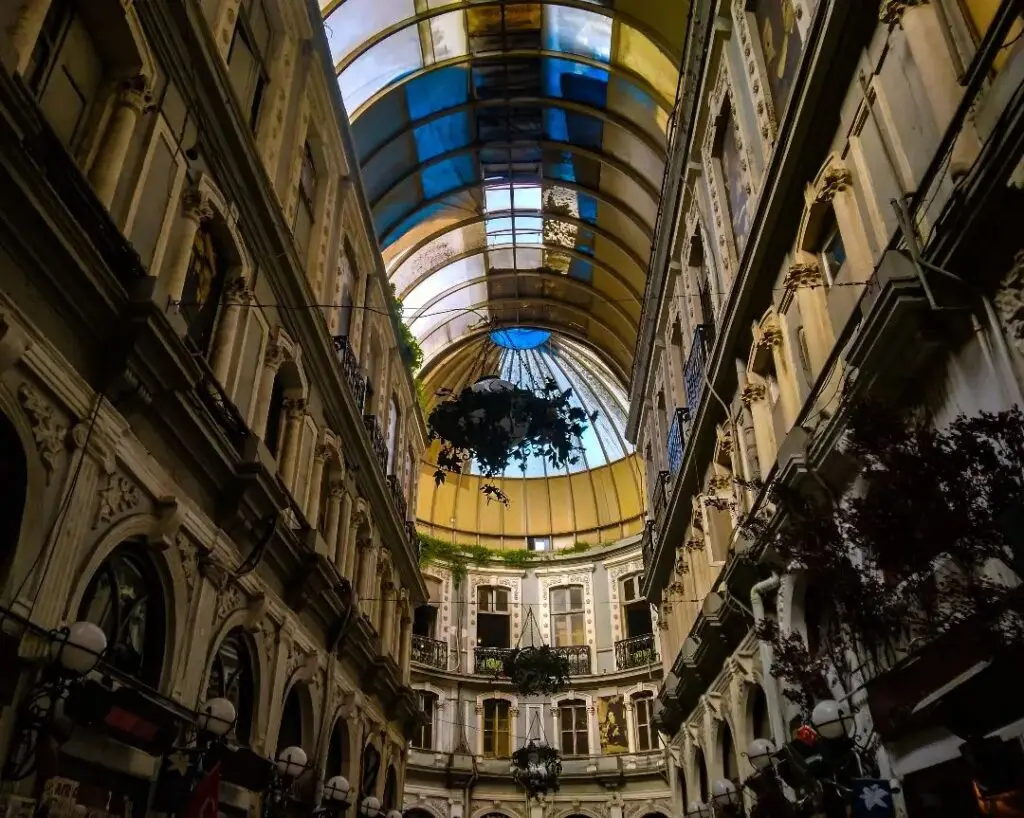
Istiklal Avenue is Istanbul’s heart! Reserved for pedestrians and crossed by an old historic tram, you will find many shops, cafeterias (the typical lokantassi ), and tea rooms. Lively day and night, it is a must-see at least once during a stay in Istanbul. At the very end, Taksim Square is a place of passage and a transport hub, even if it is not necessarily lovely.
12. THE GALATA TOWER
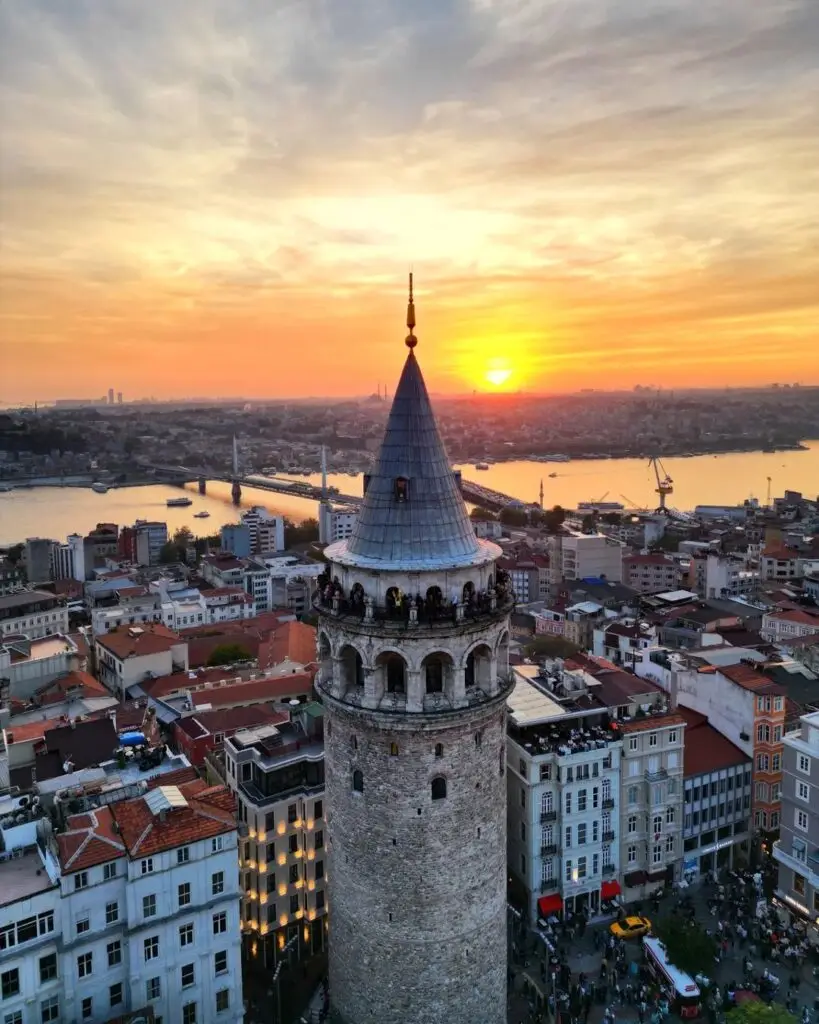
The Galata Tower is one of the emblematic monuments of Istanbul. It was built in 1348 by the Genoese and dominates the Golden Horn. It is a must-do to climb to the top to admire the magnificent panoramic view of Istanbul. A restaurant is also there.
BOOK GALATA TOWER FAST TRACK AUDIO GUIDE
13. BOSPHORUS CRUISE
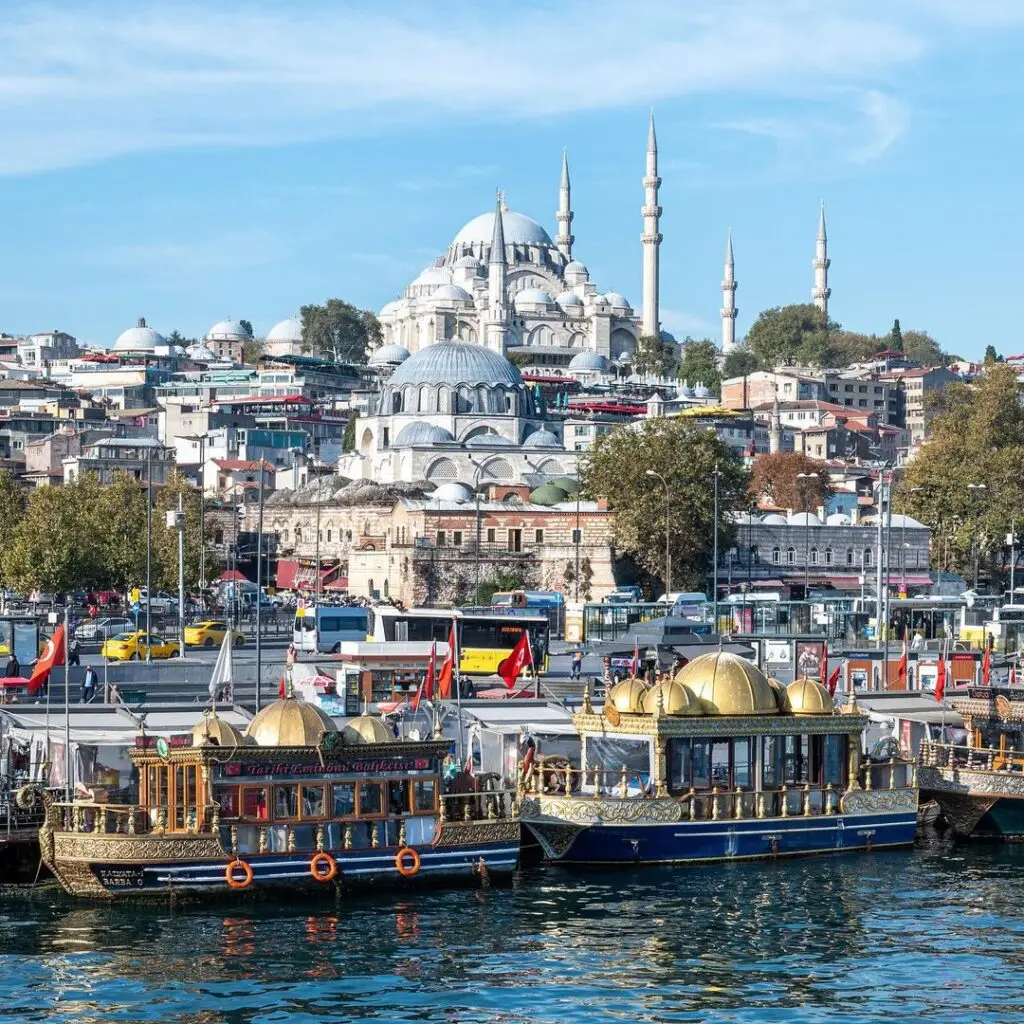
A boat trip is an essential activity to include when visiting Istanbul. The city’s unique geography, located between an estuary and strait and spanning two continents, offers an ideal setting for cruising. The most interesting boat trip is undoubtedly the one along the Bosphorus, which divides the two continents. There are two options available, a shorter cruise to the second bridge, or a longer one that goes all the way to the Black Sea. The departure point is at the tram terminus in the Kabataş district.
14. DOLMABAHCE PALACE
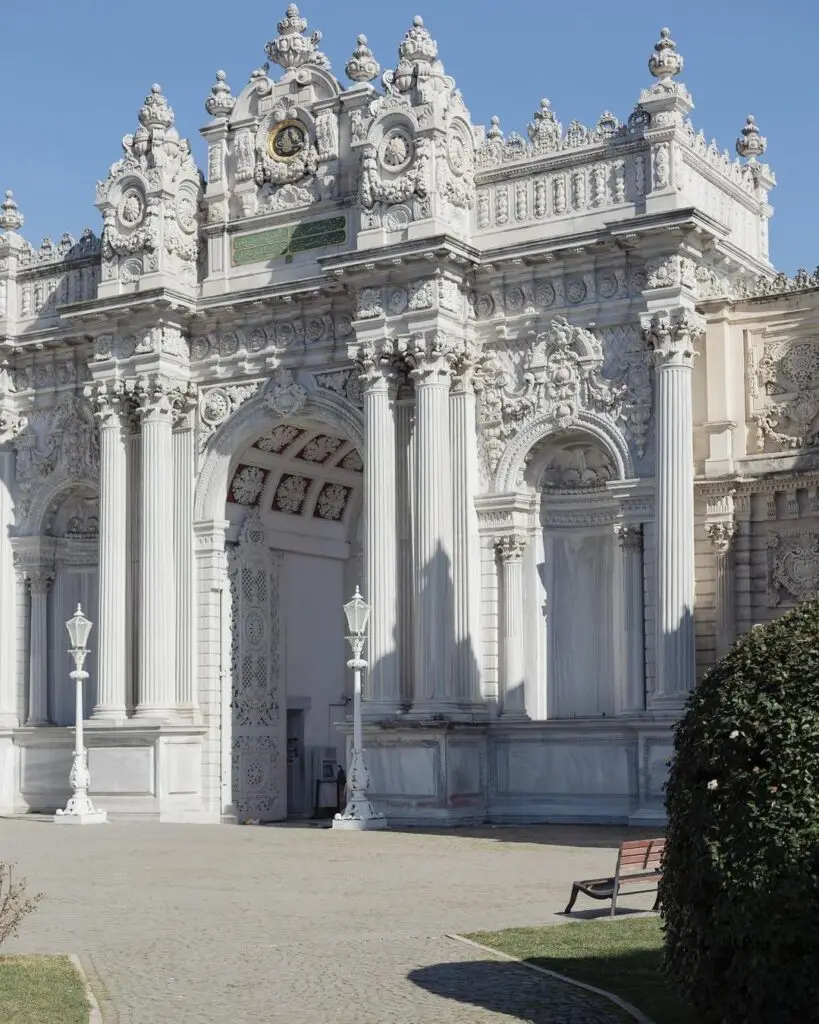
After Topkapi Palace, the Dolmabahce Palace in Istanbul is a must-visit. It was built between 1842 and 1853 to replace the traditional Topkapi Palace as the sultan’s residence, harem, and place of government. The Dolmabahce Palace is less exotic for Europeans, as it was built in the “Western” fashion, with furniture imitating those of European palaces. However, it is still an important part of Ottoman and Turkish history. Atatürk, the founder of modern Turkey, used it as his summer palace and died there in 1938. In addition to the apartments, harem, and gardens, the palace houses a museum of 19th-century paintings and a museum of clocks. If you can only visit one palace in Istanbul, I suggest choosing Topkapi, which is more typical and exotic for Europeans.
15. KARIYE MOSQUE
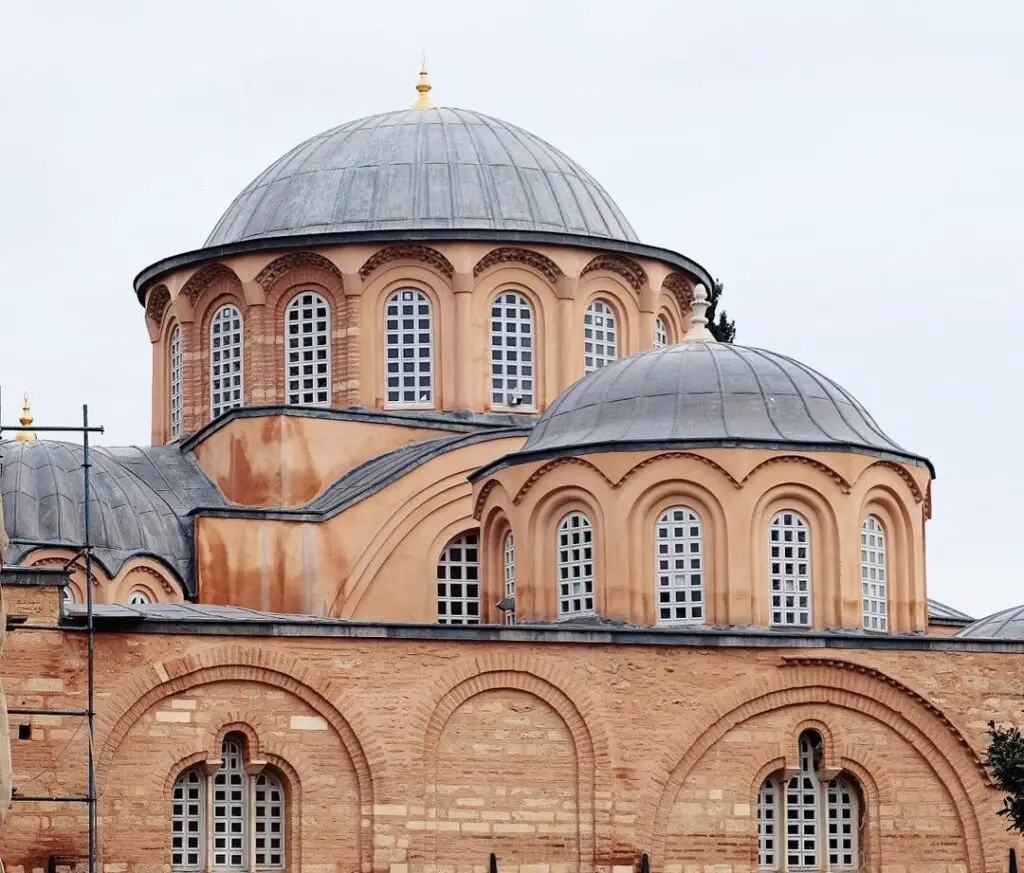
Let’s continue this guide to Istanbul by moving even further from the center. The ancient Kariye Mosque is a bit far from downtown Istanbul but worth a detour with some time. This old Byzantine church is renowned for its magnificent 14th-century mosaics . It’s not very big but you can spend some time to admire the mosaics, as well as the frescoes in the funerary chapel. Just like Hagia Sophia, it was converted into a mosque.
16. THE NEIGHBORHOODS OF FENER AND BALAT
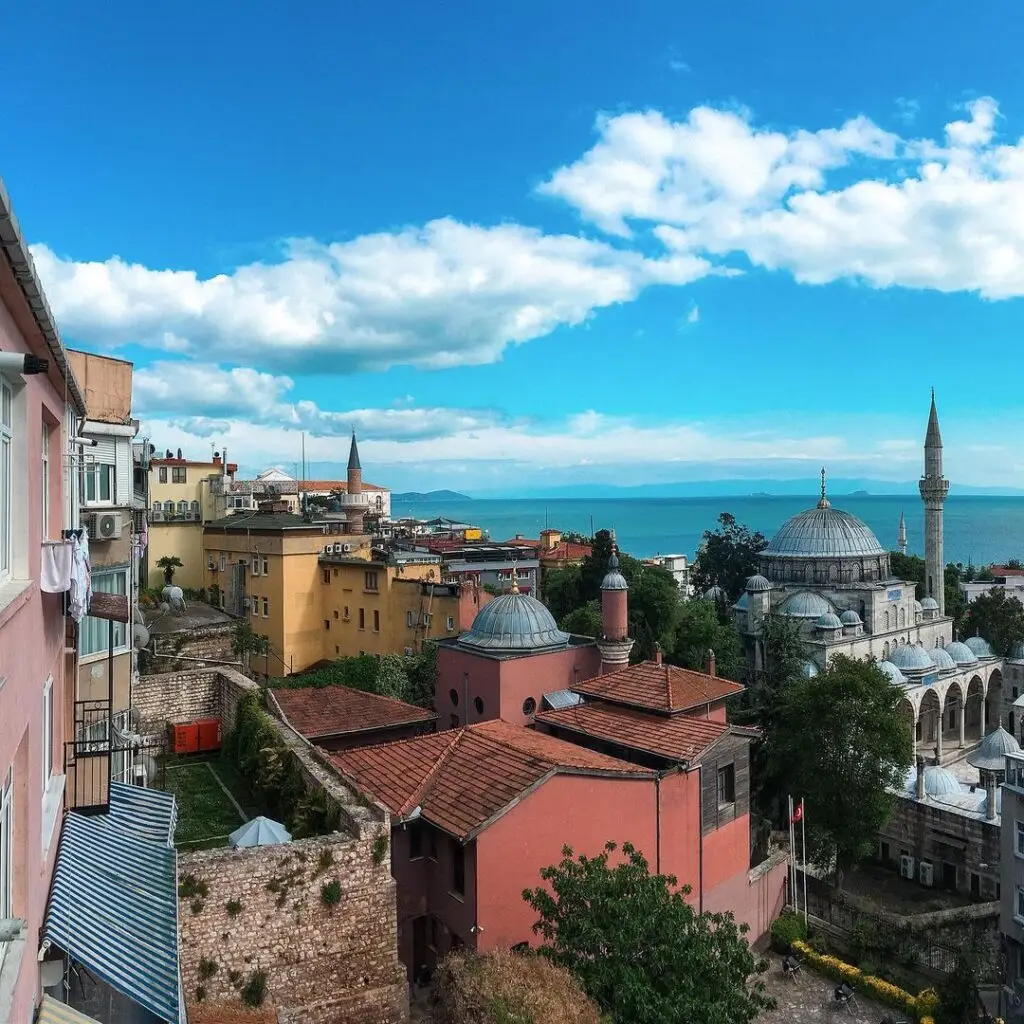
Other districts to visit during a stay in Istanbul, I suggest Fener and Balat. These two old districts of Istanbul, side by side, are located partly along the Golden Horn. They are easily accessible by transport, via the tram, or by bus from Eminönü Square.
The Neighborhood Of Fener
The district of Fener was once the Greek quarter of Istanbul, dating back to the time of the Byzantine Empire. However, since the Ottoman conquest of Constantinople, it became a predominantly Greek neighborhood. After the collapse of the Ottoman Empire and particularly after the anti-Greek riots of the 1950s, many of the Greeks fled the country. Despite its past as a prosperous area with beautiful Ottoman residences, the neighborhood underwent significant changes and became a popular destination for newcomers from rural areas and immigrants from other countries. As a result, it has transformed into a working-class district, and many of the historic buildings have fallen into disrepair, though they still hold their beauty and architectural significance.
You can see there: the seat of the Orthodox Ecumenical Patriarchate (the Vatican of the Orthodox), the ancient walls of Theodosius, and the beautiful Bulgarian St.Stephen Orthodox Church – like a jewel case containing shining gold adornment.
Balat District
The district of Balat has a rich history as the Jewish quarter of Constantinople, particularly after the expulsion of the Jews from the kingdom of Castile in 1492. It was also a rather posh neighborhood, boasting many beautiful and historic houses typical of Istanbul, as well as a few synagogues, such as the Ahrida Synagogue, which is still in operation and open to the public. Today, the district is undergoing a process of revitalization, with the addition of restaurants, bars, trendy shops, and art galleries. Its houses are very colorful, making it a pleasant neighborhood to stroll around in Istanbul. However, it’s important to note that the interesting part of the district is small, limited to a few streets that have been rehabilitated, especially between Yildirim and Vodina streets, not far from the Golden Horn.
17. KADIKOY
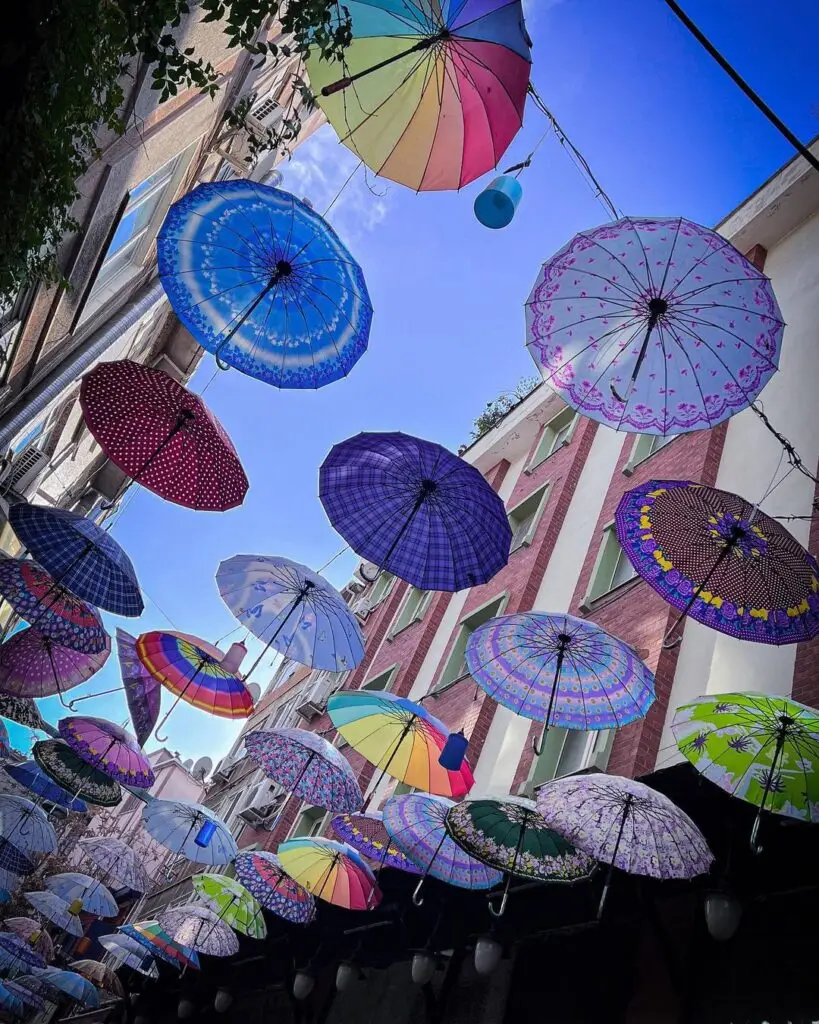
Kadıköy, also known as the “village of the judge,” is a district located on the Asian side of Istanbul, to the south of Üsküdar, and southeast of the European district of Sultanahmet. The Galata Bridge connects the district to Eminönü Square or Karaköy Pier on the European side, and boats are frequent, departing every 15 minutes during the day and every half hour in the evening, until 11:00 p.m. for Karaköy. The district has a long and rich history, having been founded in 685 BC as an ancient Greek colony known as Chalcedon. It was later conquered by the Ottomans in 1353, exactly a century before Constantinople became Istanbul. Today, Kadıköy is an important urban center on the Asian side of Istanbul, with a population of around 500,000 inhabitants, and is frequently connected by boat to the European side. It is a typical and vibrant district of Istanbul that offers a beautiful view of both the European and Asian shores, particularly the tip of the Serail and the Sultanahmet districts. One of the highlights of Kadıköy is its lively atmosphere, which can be experienced in the small pedestrian area near the quays. There, visitors can find plenty of shops, bars, cafes, and restaurants, making it an ideal place to dine and socialize. For those with more time, a chic district unfolds to the south along the coast, which can be explored by taking a ride on the small old tram that makes a loop in the area.
18. ORTAKOY
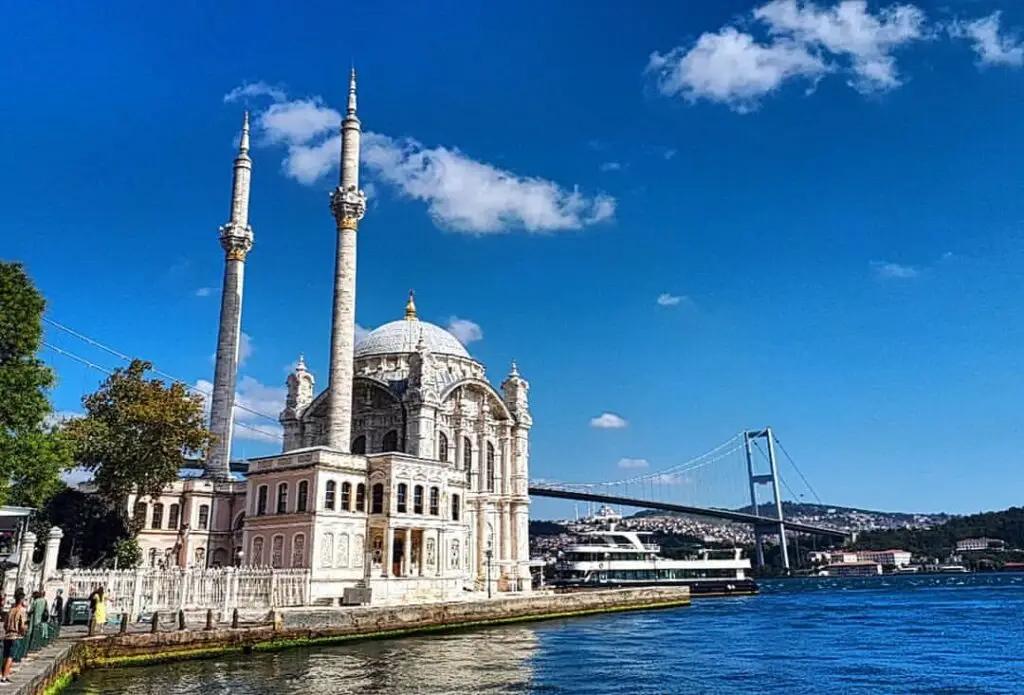
Ortaköy is a small and fashionable village that has become part of the Beşiktaş district in Istanbul. It was originally a cosmopolitan fishing village, home to Turks, Jews, and Armenians. Today, it is renowned for its iconic mosque on the Bosphorus, which is a must-see attraction in Istanbul. Ortaköy still has some traces of its multicultural past, including a synagogue and a Greek church. However, the area has undergone significant transformation in recent years and has become a trendy hub with a variety of bars, cafes, restaurants, and art galleries, making it a popular destination for locals and tourists alike. The village is also home to Istanbul Galatasaray University, but the best way to appreciate its charm is by taking a boat ride along the Bosphorus. However, as the area is only accessible by bus or boat, it may take some time to explore it fully. Therefore, for those with only a limited time in Istanbul, visiting Ortaköy may not be a top priority.
19. ARNAVUTKOY

Arnavutköy, which means “the Albanian village” in Turkish, is another charming old village in Istanbul, located on the European side of the Bosphorus, further away from Ortaköy. It was also a cosmopolitan village, and its most famous feature is the beautiful Ottoman wooden houses that line its streets. To fully appreciate the beauty of these houses, it’s best to view them from a boat ride along the Bosphorus. Arnavutköy’s architecture and history make it a unique destination in Istanbul, and a must-see for those interested in the city’s cultural heritage.
THE MOST BEAUTIFUL PARKS AND GARDENS IN ISTANBUL
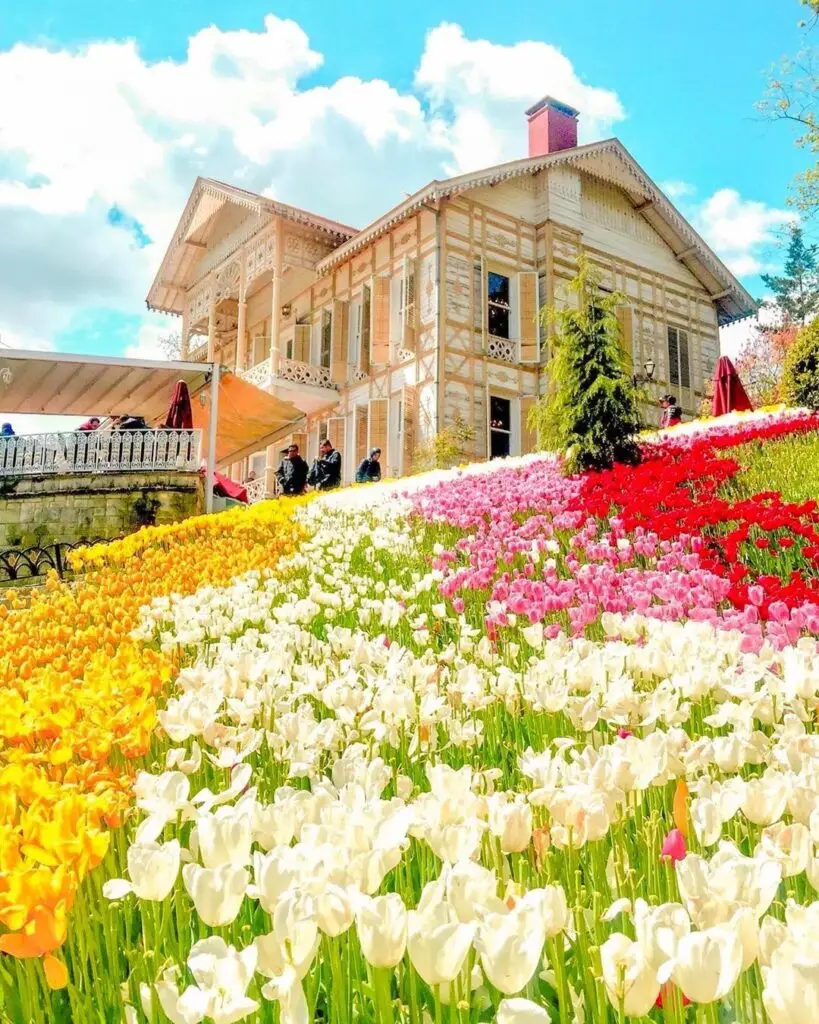
Here are the most beautiful parks and gardens in Istanbul:
- Gülhane Park (Rose Garden Park) is the most central. It was originally part of Topkapi Palace before becoming a public garden in Istanbul. With its 15 hectares, it is very pleasant, close to Sultanahmet.
- Eminönü Square Yildiz Park (Park of the Star) is located in the Beşiktas district and overlooks the Bosphorus. This was the Yildiz Imperial Palace Park. Today it is one of the largest parks in Istanbul, with around 45 hectares. It offers amazing views, as well as different spaces, trees, flowers, and two old Ottoman pavilions. Good to know: a cable car takes you to the top.
- Emirgan Park : this time you will have to go much further along the Bosphorus to discover this magnificent park known for its tulips. This is also one of the largest parks in Istanbul.
MUSEUMS IN ISTANBUL
MUSEUM PASS ISTANBUL
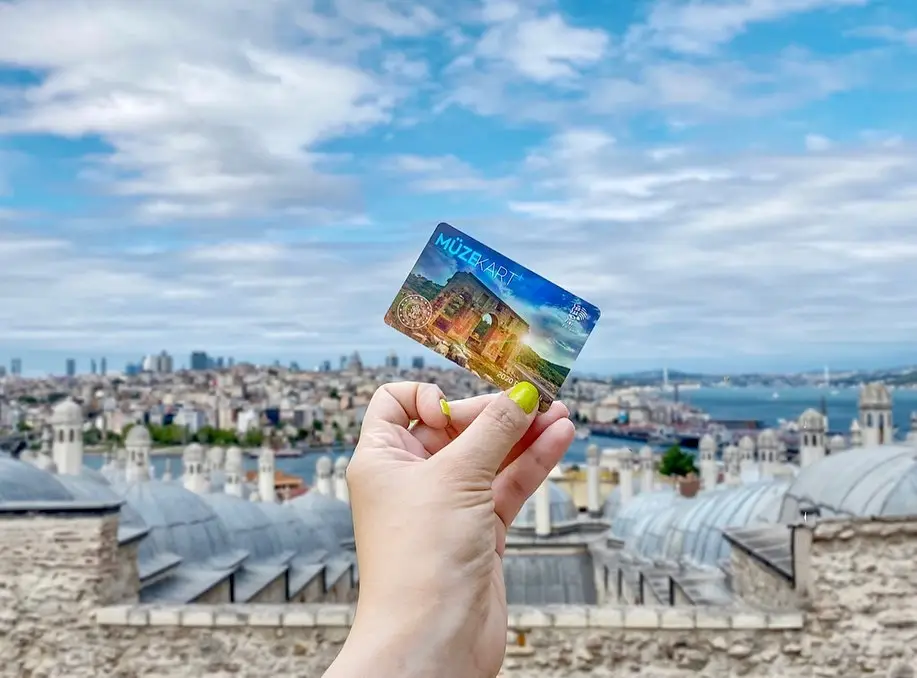
Istanbul offers the Museum Pass, which is valid for 5 days and allows visitors to enter multiple museums and monuments. If you plan to visit even two museums, it is highly recommend getting the pass. It’s best to purchase it in advance to avoid waiting in lines, and the pass also allows for priority access. Plus, you can cancel your purchase for free.
With the Museum Pass, you can visit Topkapi Palace, the Archaeological Museum, the Turkish and Islamic Arts Museum, the Palace Mosaic Museum, the Museum of Turkish Carpets and Kilims, the Istanbul Mosaic Museum, the Chora Church Museum, the Galata Tower, and the Yıldız Palace.
INFO: national museums in Turkey are free for people with disabilities, even with an official European card! (priority or disability card)
WHICH MUSEUMS TO VISIT IN ISTANBUL?
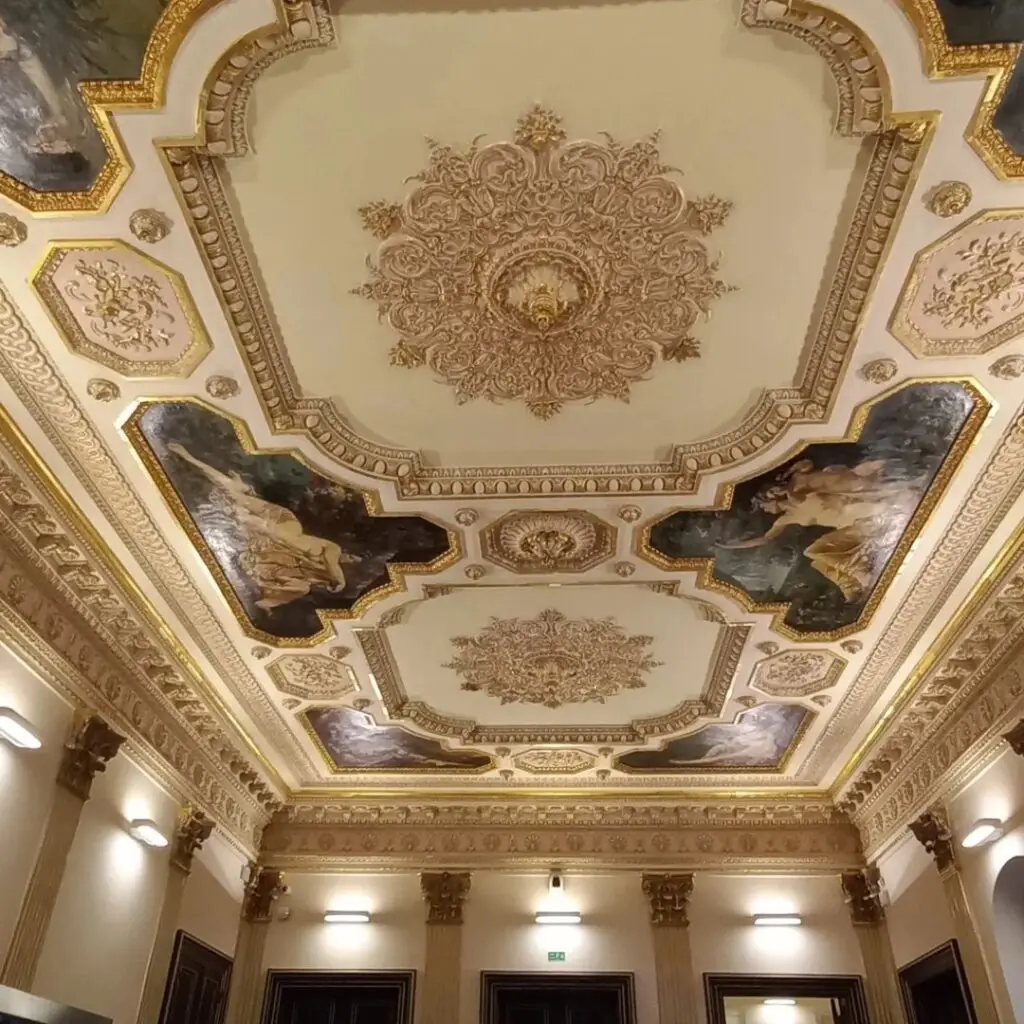
THE TURKISH AND ISLAMIC ARTS MUSEUM
The Turkish and Islamic Arts Museum is one of the major museums to visit in Istanbul. The Museum of Turkish and Islamic Arts is located on the Hippodrome Square, in the former palace of Ibrahim Paşa, the grand vizier of Suleiman. The museum showcases objects related to various peoples of Asia Minor, even before the Ottoman Empire. The collection includes earthenware, glassware, metals, everyday objects, old Korans, illuminations, calligraphy panels, and a beautiful collection of carpets. The museum also features a reconstruction of Ottoman interiors.
THE ISTANBUL ARCHAEOLOGICAL MUSEUM AND ITS ANNEXES (MUSEUM OF THE ANCIENT ORIENT AND MUSEUM OF CERAMICS)
The Istanbul Archaeological Museum is one of the most important in the country! It is divided into 3 buildings: the Archaeological Museum itself, the Ceramics Pavilion, and the Museum of the Ancient Orient, dedicated to Mesopotamia, Assyria, Egypt, and Babylon.
- The main building of the Archaeological Museum is the most important one, where you can find exhibits related to the Greek and Roman worlds, as well as the Byzantine Empire. A section is devoted to the excavations carried out in Istanbul. In the museum, you can see Roman busts, the remains of a Greek temple, tombs and sarcophagi, coins from the Byzantine and Ottoman Empires, pottery, and various everyday objects from the time. You can see what was found under the old forums, the Hippodrome, the Imperial Palace, and some Byzantine churches. One of the highlights of the museum is the sarcophagus of Alexander the Great.
- The Ceramics Pavilion is dedicated to various ceramics, especially those from Iznik.
- The Museum of the Ancient Orient presents works from the former Ottoman Empire, belonging to civilizations such as Babylonian, Persian, and Hittite.
THE PALACE MOSAIC MUSEUM
The Palace Mosaic Museum is located below the Blue Mosque, it features the mosaics found from the former imperial palace of the Byzantine era. The Great Palace Mosaic Museum is a small museum located near the Sultanahmet district. The mosaics on display were once part of the Great Palace, the official residence of the Byzantine emperors in Constantinople. The mosaics are mostly from the 5th century and depict hunting scenes and other daily activities. They showcase a mix of Roman and Byzantine influences.
THE ISTANBUL MUSEUM OF MODERN AND CONTEMPORARY ART
The Istanbul Museum of Modern and Contemporary Art was opened in 2004. It is the first museum of its kind in Turkey! Istanbul Modern is a museum that features works by Turkish artists from the end of the 19th century to the present day. It is located on the European side of the Bosphorus in the Beyoğlu district and is easily accessible by the T1 tramway. The museum offers both a permanent collection and temporary exhibitions.
OTHER MUSEUMS TO SEE IN ISTANBUL:
- Islamic Science and Technology MuseumThe Rahmi M. Koç Museum (private museum of transport and communications industry)National Museum of Dolmabahçe Palace Paintings
- The Naval museum
- Galata Mevlevi House Museum
THE MOST BEAUTIFUL MOSQUES TO SEE IN ISTANBUL
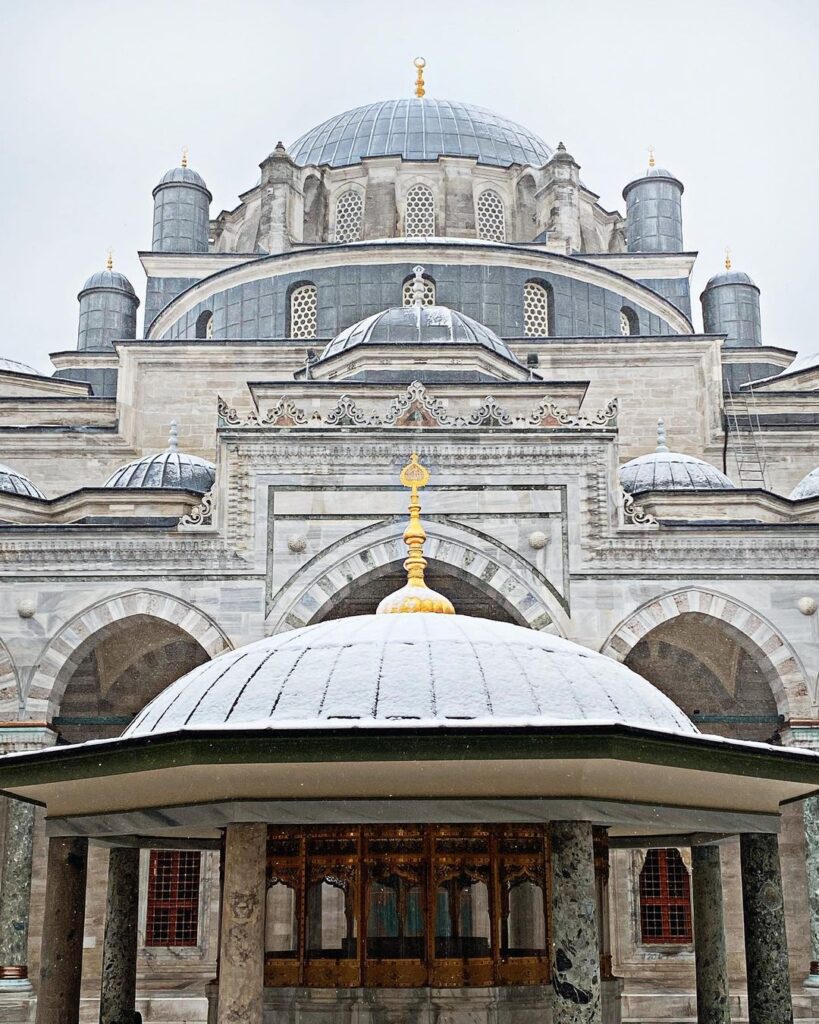
Admiring the beauty of the mosques is of course one of the essential activities in Istanbul:
- Mosque of Rüstem Pasha: located not far from the Egyptian bazaar, this mosque was built between 1560 and 1564 under the order of the grand vizier Rüstem Pasha, husband of Mihrimah, only daughter of Suleiman the Magnificent. The interior is decorated with blue ceramics.
- Fatih Mosque: not far from the Balat district and Beyazid Square, this is one of the largest mosques in Istanbul, and also one of the oldest! Its construction began in 1463, ten years after the capture of Constantinople. It owes its name to Sultan Mehmet II, the “Conqueror”, or Fatih in Turkish, who conquered the city. Like many mosques in Istanbul, its architecture is based on that of Hagia Sophia.
- Eyüp Sultan Mosque: located in the district of Eyüp, not far from the Golden Horn and the cemetery of the same name (see below), it owes its name to the companion of the Prophet who died during the first siege of Constantinople. This is still one of the oldest mosques in Istanbul since it was completed in 1458. The Eyüp mosque is also a place of pilgrimage.
- Little Hagia Sophia Mosque: I suggest you discover this pretty little mosque in Istanbul, located below its big sister Hagia Sophia. The Küçük Aysafoya Camii in Turkish was a 6th-century church, so very old and Like Hagia Sophia, it was transformed into a mosque.
- Mosquée Ortaköy: The Ortaköy mosque is now one of the emblems of Istanbul. It is different from other mosques in the center of Istanbul because of its neo-baroque interior from the middle of the 19th century.
- Şehzade Mehmet Mosque: located near Beyazid Square, this large mosque was built by order of Suliman, to commemorate the memory of his late son.
- Bayezid II Mosque: not far from Istanbul’s Grand Bazaar, it was built in 1501 by order of Sultan Beyazid II.
- Pertevniyal Valide Sultan Mosque : in the Aksaray district, again not far from Beyazid Square, this mosque from the end of the 19th century offers a very colorful interior and a style that contrasts with the other mosques in Istanbul. Built for the mother of Sultan Abdülaziz , it was also one of the last built under the Ottoman Empire.
OTHER MOSQUES:
- Mihirimah Mosque
- Dolmabahce Mosque
- Sinan Pasha Mosque
- Valid Yeni Mosque (Asian side)
- Şakirin Mosque (Asian side)
- Mihrimah Mosque (Asian side)
- Çamlıca Mosque (Asian side)
1-7 DAYS ITINERARIES TO VISIT ISTANBUL
I have put together itineraries from 1 to 7 days to help you plan your stay in Istanbul. Of course, if you don’t have that much time, you can adjust the program accordingly. The first three days are essential for visiting Istanbul’s must-see attractions, while the rest of the program is more flexible. The program is designed to help you explore the city on foot, and I have organized it geographically to make it easier to navigate.
Please note that the program is only a guide, and you can modify it according to your interests and preferences.
VISIT ISTANBUL IN 1 DAY
What to do in Istanbul in one day?
If you only have one day to visit the city (in transit for example), the program will be tight but here is what I advise you to see first:
- Stroll through the Sultanahmet district
- Discover the Hagia Sophia Mosque
- Visit Topkapi Palace
- Admire the Blue Mosque
- Visit the Basilica Cistern
- Go through the Hippodrome
You can also book a great 1-day tour below, totally worth it:
BOOK BEST OF ISTANBUL IN 1 DAY TOUR
VISIT ISTANBUL IN 2 DAYS
What to visit, what to do in two days in Istanbul? I suggest a few other “must-haves”:
- Suleiman Mosque ( Süleymaniye)The Grand Bazaar
- Gulhane Park, Sirkeci Eminönü Square and the New Mosque
- The spice bazaar
- The Rustem Pasha Mosque
- Take a trip to the Asian side, especially to Kadiköy
VISIT ISTANBUL IN 3 DAYS
Visiting Istanbul in 3 days therefore allows you to have a better overview of the city and should be the minimum duration.
What to do in Istanbul in 3 days?
- The other side of the Golden Horn
- Avenue Istiklal
- The Galata Tower
- Bosphorus Cruise
VISIT ISTANBUL IN 4 DAYS
What to do in Istanbul in 4 days? Most of the “must-sees” can be visited in 3 days at a good pace.
The major monument to see on this day 4 in Istanbul is the Dolmabahçe Palace.
Here are several options to end the day, according to your tastes, while respecting the practical aspect of geography and transport.
- Dolmabahce Palace
- Beşiktas district and Yildiz park
- The naval museum
- The Ortaköy district and its famous mosque on the Bosphorus
- Ancient village Arnavutköy
- Emirǧan Tulip Park
VISIT ISTANBUL IN 5 DAYS
What to do in Istanbul in 5 days? I suggest you here to discover above all the old Kariye Mosque renowned for its beautiful Byzantine mosaics.
For practical reasons, then stay in this outlying sector of the city. Several choices are available to you!
- Kariye Mosque and its superb mosaics
- Mihrimah Mosque
- The Fethiye Mosque Museum, former Pammakaristo Church
- Sultan Selim Mosque OR Fatih Mosque
- The old quarters of Fener and Balat
- A walk along the Golden Horn
VISIT ISTANBUL IN 6 DAYS
What to do in Istanbul in 6 days? I suggest:
- A cruise on the Golden Horn
- The mosque and the cemetery of Eyüp
- Miniaturk Park
GOLDEN HORN CRUISE
If you have more time, why not take a stroll on the Golden Horn?
A little less picturesque than the one on the Bosphorus, this estuary of two rivers is still a major element of Istanbul.
You can go down to the Eyüp cemetery and climb up the cable car to admire the view.
MOSQUE AND CEMETERY OF EYÜP
You can reach the mosque and its cemetery either by boat or by taking the T5 tram line.
Eyüp Mosque is home to the tomb of one of the Prophet’s companions and remains an important site for pilgrimage and family outings, thanks to its beautiful gardens. It’s best to visit during the weekdays to avoid the crowds.
The nearby Eyüp cemetery is one of Istanbul’s oldest and most renowned cemeteries.
Afterwards, you can head to the Pierre Loti Café which can be reached by cable car, and enjoy the stunning views of the Golden Horn. Don’t forget to take a stroll around the neighborhood to soak up the atmosphere!
MINIATÜRK
This outdoor model park is located further up the Golden Horn, and it’s a great option for families visiting Istanbul.
Getting there from Eyüp can be a bit tricky because there’s no bridge, but you can always take a boat back.
Miniatürk has a large collection of models of famous monuments and landmarks from all over Turkey, some of which may be unfamiliar to European visitors. Of course, there are plenty of models of Istanbul’s most iconic landmarks as well.
Even if you don’t plan to visit Miniatürk, I recommend taking a stroll along the Golden Horn to soak in the atmosphere of this historic part of Istanbul.
VISIT ISTANBUL IN 7 DAYS
What to do in Istanbul in 7 days (one week)?
If you stay 7 days in Istanbul, you will still have plenty to do. Here are the options:
GETAWAY TO THE PRINCES’ ISLANDS
Easily accessible by boat, the Princes’ Islands are nine in number. Peaceful greenery- they are very popular with Istanbul residents on weekends.
USKUDAR
This other district on the Asian side of Istanbul faces Kabatas and Dolmabahçe Palace. There are several beautiful mosques there, including the Yeni Valide Sultan and the Mihrimah Mosque (not to be confused with the one on the European side).
You can stroll in a large park, and at the top, discover the modern Şakirin Mosque, one of the few designed by a woman.
You can also discover the Maiden’s Tower, another symbol of Istanbul.
BEYLERBEYI PALACE
Located on the Asian side of the Bosphorus, Beylerbeyi Palace is among the other must-see palaces in Istanbul. It can only be visited in a guided way, and photos are prohibited!
PAVILION KUCUKSU
Pavilion Kucuksu, literally “the little pavilion”, is another (small) palace on the Asian side.
Same visit condition as Beylerbeyi Palace.
VISIT ISTANBUL IN 8, 9, 10 DAYS
And yes, a week is not necessarily enough to discover the mysteries of Istanbul.
If you are staying in Istanbul for 8,9 or 10 days, here are some interesting options in addition to these I already mentioned:
THE HAMMAMS IN ISTANBUL
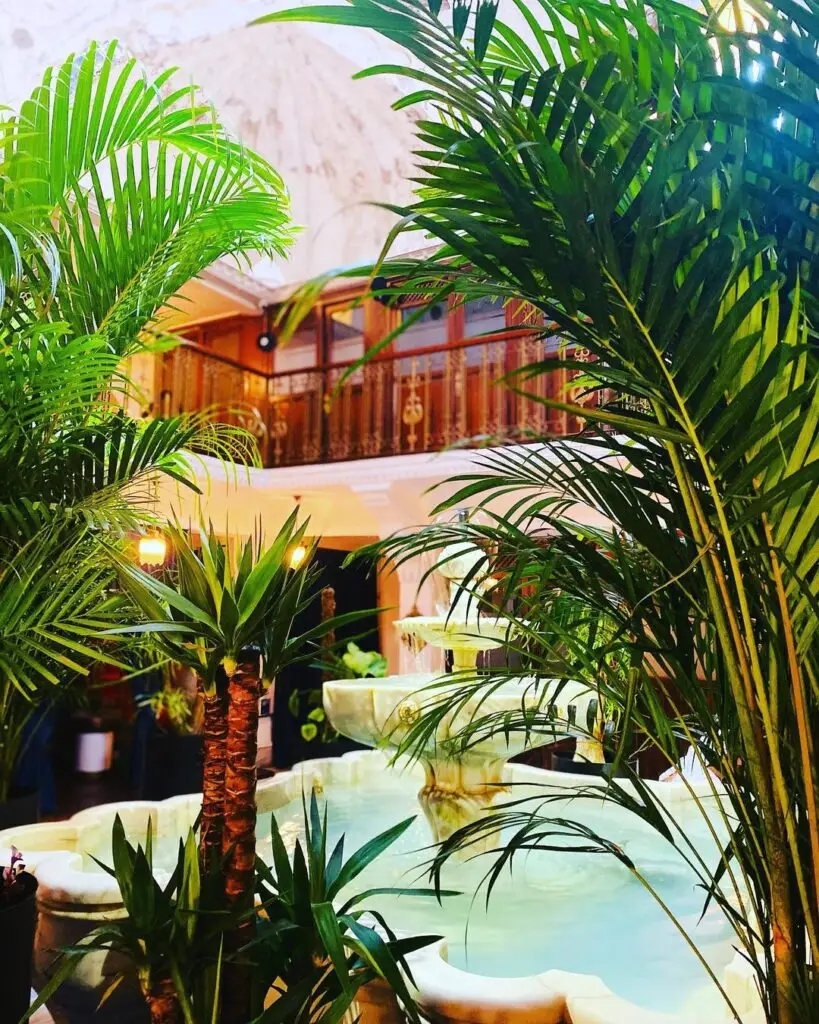
Istanbul is full of hammams or “Turkish baths”, some of which are very old and have very beautiful traditional architecture.
WHAT IS THE HAMMAM?
The hammam is a place of relaxation and hygiene. Traditionally, this is where the Turks washed, but without fully immersing themselves. At the time, there were no bathrooms in houses, so people went to the hammam to wash themselves. It was especially important to be clean in Islam, but the hammam was also a place to relax and socialize with others. Today, people come to hammams mostly to relax and enjoy various treatments such as massages. The hammam usually has three rooms with different temperatures, similar to the Roman baths.
- one at room temperature (which also serves as a changing room depending on the case)
- one at a higher temperature
- and a last warmer one
We move gradually from one to the other. The water vapor opens the pores of the skin and releases toxins. You can then wash, have a treatment, have a massage, etc.
THE MOST BEAUTIFUL HAMMAMS IN ISTANBUL
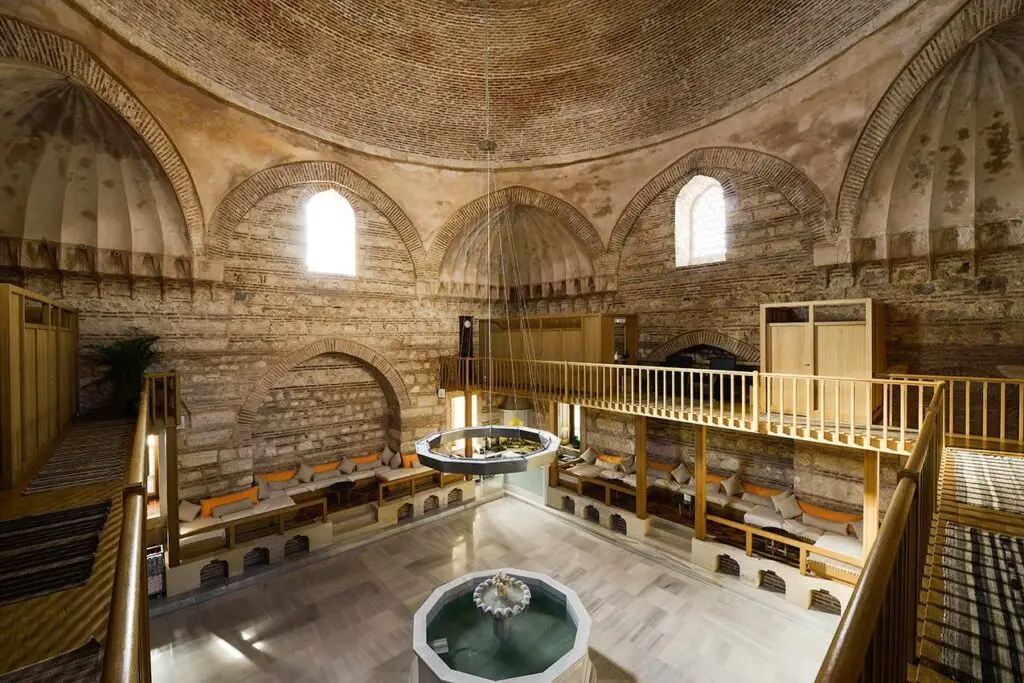
Istanbul currently has approximately sixty hammams, with some being modern and others old but renovated. Some have separate sections for men and women, while others require visitors to juggle their schedules according to their gender.
A few hammams in Istanbul also offer small cabins for couples, but they are relatively rare.
If you’re interested in visiting some of Istanbul’s most beautiful hammams, here is a short list with links to their websites for more information, photos, and reservations (which are almost always mandatory):
- The Hürrem Sultan hammam (baths of Roxelane), close to Hagia Sophia, is among the oldest
- Suleiman’s hammam (Suleymaniye Hamman), from the 16th century
- The Kılıç Ali Paşa Hammam, also from the 16th century
- The Cağaloğlu hammam, built in the 18th century, was one of the last from the Ottoman era
WHERE TO GO SHOPPING IN ISTANBUL?
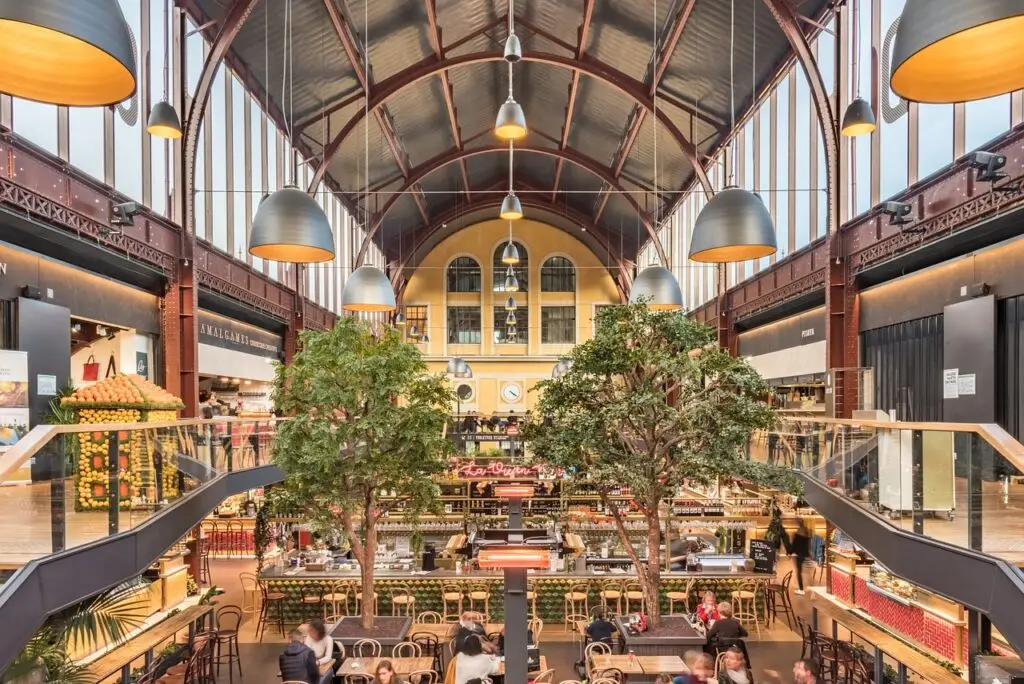
Istanbul is a shopping destination with options ranging from small stalls to large American-style malls, making it a great place for everyone to shop.
For a traditional shopping experience, you can stroll through the Grand Bazaar and the Egyptian Bazaar, as well as the small shops in old Istanbul. On the other side of the Golden Horn, Istiklal Avenue has a good number of shops with Turkish or international brands to suit all styles. This is where Istanbul’s middle class comes to shop.
The chic district of Nişantaşi features several international brands, a luxury boutiques such as Vuitton, Hermès, and Prada, as well as a few shopping centers.
The Beşiktaş district is home to the large Zorlu Center shopping center and is conveniently located not too far from Istanbul’s tourist spots.
If you want to experience giant shopping centers, you will have to travel further into Istanbul, but fortunately, some are located on the metro:
Here are some examples :
- The Kanyon shopping center
- The Venezia Mega Outlet, with architecture that imitates Venice, with gondola rides, attractions, games for children…
- Istinye Park
- Forum Istanbul
VISITING ISTANBUL – FAQ
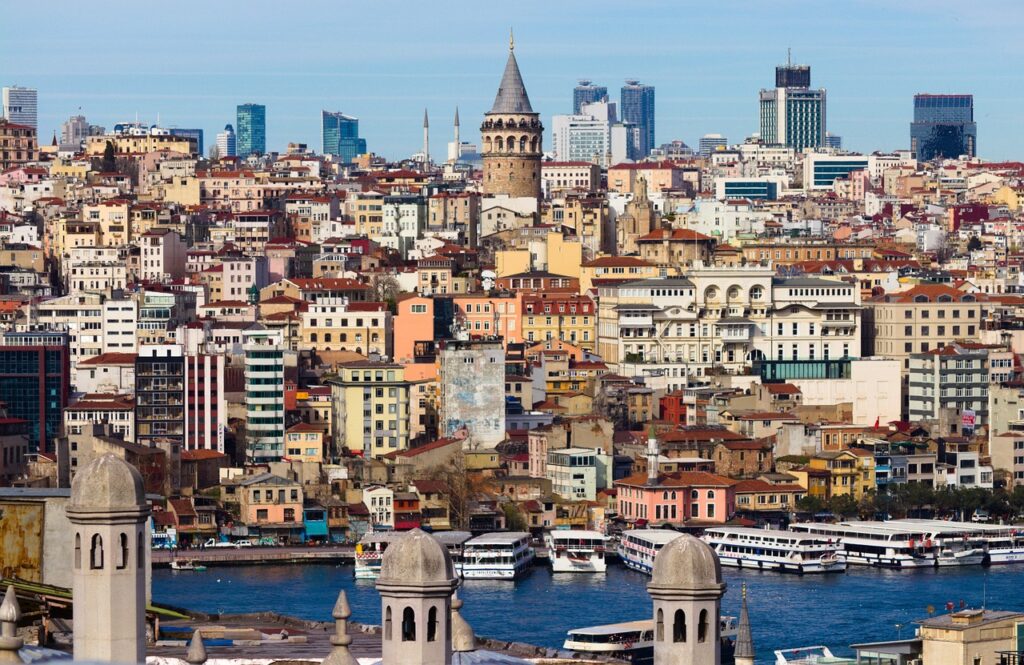
WHEN TO VISIT ISTANBUL?
Contrary to popular belief, Istanbul does not necessarily enjoy a mild climate! Summers can be hot, while winters can be very cold, and even snowy. Like many destinations, the best times to visit Istanbul are during the spring and autumn seasons.
Visiting Istanbul in winter can be a wonderful experience! However, snow doesn’t happen every year, and the climate is likely to be gray and rainy.
If you don’t mind the heat, you can still visit during the summer.
WHAT IS THE CURRENCY IN ISTANBUL?
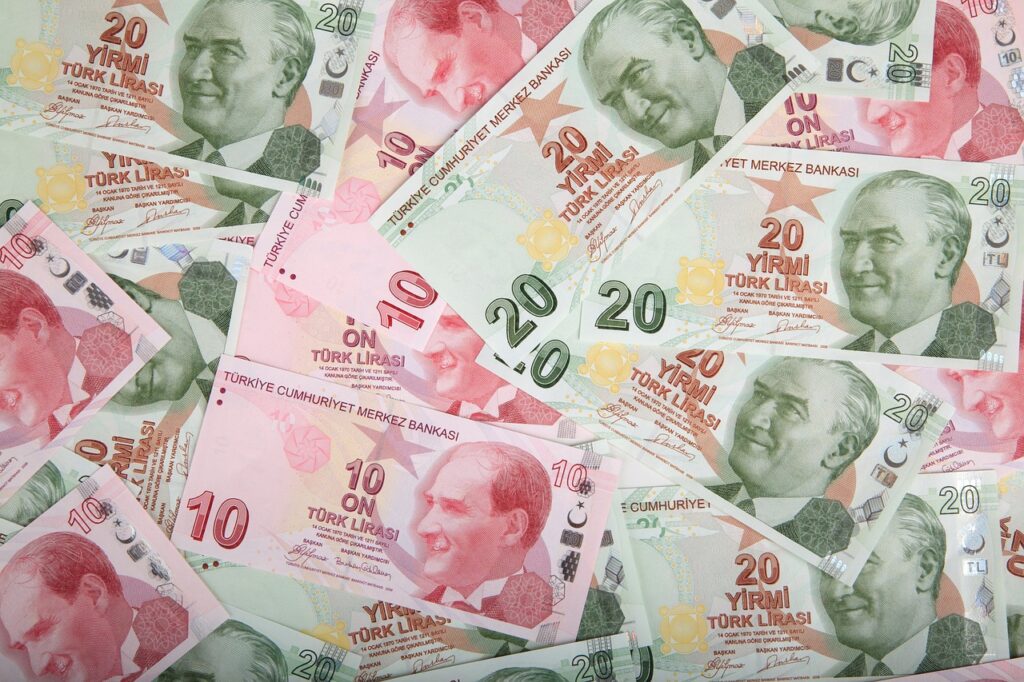
The currency in Istanbul and Turkey is the Turkish Lira (TL), pronounced “lira” in Turkish. The symbol of the Turkish Lira is ₺.
The price has varied greatly in recent years, but in 2024 it is around 19 TL for 1$ or 21 TL for 1 EURO.
I advise you to check well before you go.
IS ISTANBUL SAFE CITY TO VISIT?
Overall, Istanbul is a safe city. You can walk around Istiklal Street at night without any problems. The metro is clean and safe, and the locals are quite helpful.
However, it is still important to take basic precautions such as not carrying large sums of money or valuable items, keeping a copy of your identity documents with you, and leaving the original in your accommodation.
Women should avoid wearing short skirts or shorts and plunging necklines in more traditional neighborhoods, but this won’t be a problem around Istiklal Street.
HOW TO VISIT THE MOSQUES IN ISTANBUL?
Just like the rest of Turkey, mosques in Istanbul are free and open to everyone.
However, ladies are required to cover their heads and dress modestly before entering the premises. You will find that everything you need to cover up will be provided at the entrance, but it’s always a good idea to bring your scarf for hygiene purposes. If you plan on visiting less touristy mosques, nothing will be provided to you.
Men and women are also required to remove their shoes before entering the mosque.
You should be respectful and maintain a calm demeanor as mosques are still places of prayer.
Lastly, taking photos is allowed in mosques in Istanbul.
WHERE TO EAT IN ISTANBUL?
Turkish cuisine is one of the best in the world. Here you can read about the best restaurants in Istanbul and in this post, we have listed all the best places with the best street food in Istanbul.
VISIT ISTANBUL WITH A DISABILITY
Turkey has recently taken into account the issue of disability. Few places are still easily accessible, but the Turks are very helpful when needed.
Note that national museums and monuments in Turkey are free for disabled people and an accompanying person.
It is normally enough to present a European disability card.
VISIT ISTANBUL WITH CHILDREN

What to visit in Istanbul with children? Istanbul has plenty of family-friendly attractions that will delight visitors of all ages:
- Topkapi Palace and especially its harem
- The Galata Tower and its view
- The cruise on the Bosphorus
- Miniatürk, the model park representing the must-see places in Turkey!
- Aquarium SeaLife
- Madame Tussauds Wax Museum
- Yildiz Park
- Emirǧan Park
- Take the old tram on Istiklal Avenue and the Tünel!
- The railway museum
WHAT TO DO IN ISTANBUL AS A COUPLE
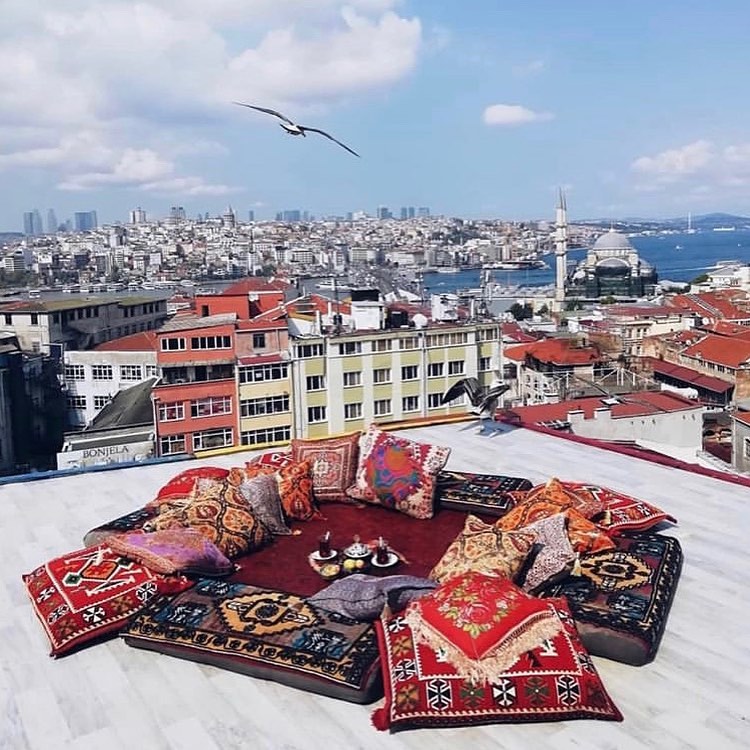
Istanbul can be a beautiful romantic destination!
- Discover Topkapi Palace and its harem together
- Shopping in the Grand Bazaar or Spice Bazaar
- Take a dinner cruise on the Bosphorus
- Have a drink or dinner in a restaurant overlooking the Bosphorus
- Stroll through Sultanahmet in the evening and discover the illuminated monuments
- Enjoy a treatment in a mixed hammam
- Stroll through Emirǧan Park among the tulips (in season)
- Watch a Whirling Dervish show
WHAT TO DO IN ISTANBUL WHEN IT RAINS

- Take refuge in the mosques and admire their architecture
- Visit Dolmabahçe Palace
- Visit Topkapi Palace (well, if it rains too much forget, there are exteriors!)
- Stroll through the bazaars
- Visit the different museums in the city
- Enjoy a moment of relaxation in a hammam
- Discover the SeaLife aquarium
- Take advantage of the many shopping centers
- Take a break in one of the many tea rooms!
- Doing the cruise on the Bosphorus anyway, it’s sheltered!
WHAT TO DO FOR FREE IN ISTANBUL
Istanbul is almost like an open-air museum, so you can explore different neighborhoods of the city on foot without spending a dime!
- Visiting mosques in Istanbul is always free, just remember to dress appropriately. Hagia Sophia has become a mosque again, and it is now also free to visit.
- You can also visit Orthodox or Catholic churches for free.
- Finally, there are plenty of free viewpoints in Istanbul that offer stunning panoramic views of the city.


